Ep. 67: In The Clear Moonlit Dusk, by Mika Yamamori
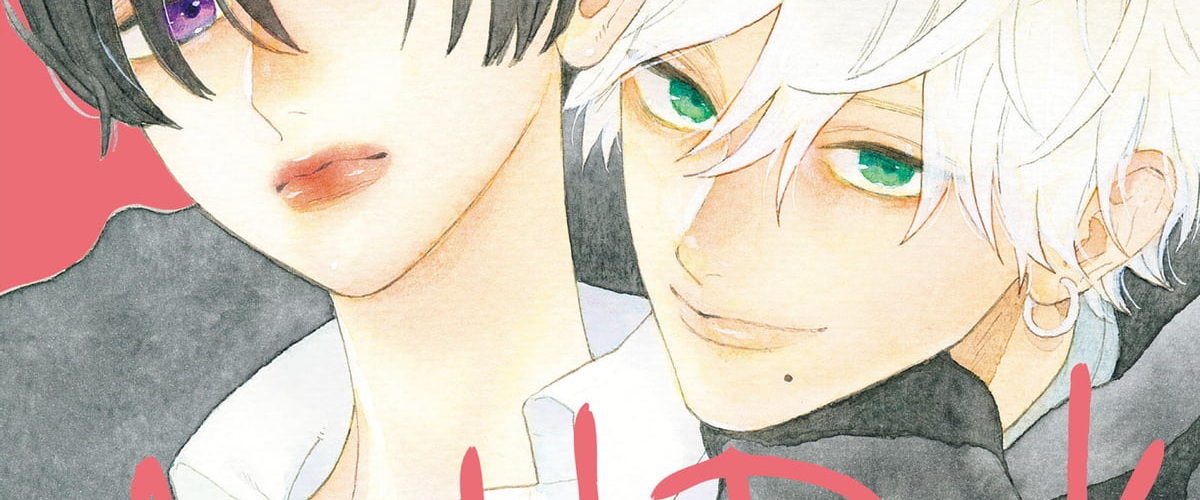
Deb continues to recommend her favorite shojo manga to the Mangasplainers, this week cheering-on Mika Yamamori’s In The Clear Moonlit Dusk. But will the arrow of this shojo manga’s love pierce Chip’s cold, cruel heart? Listen on and find out!
Powered by RedCircle
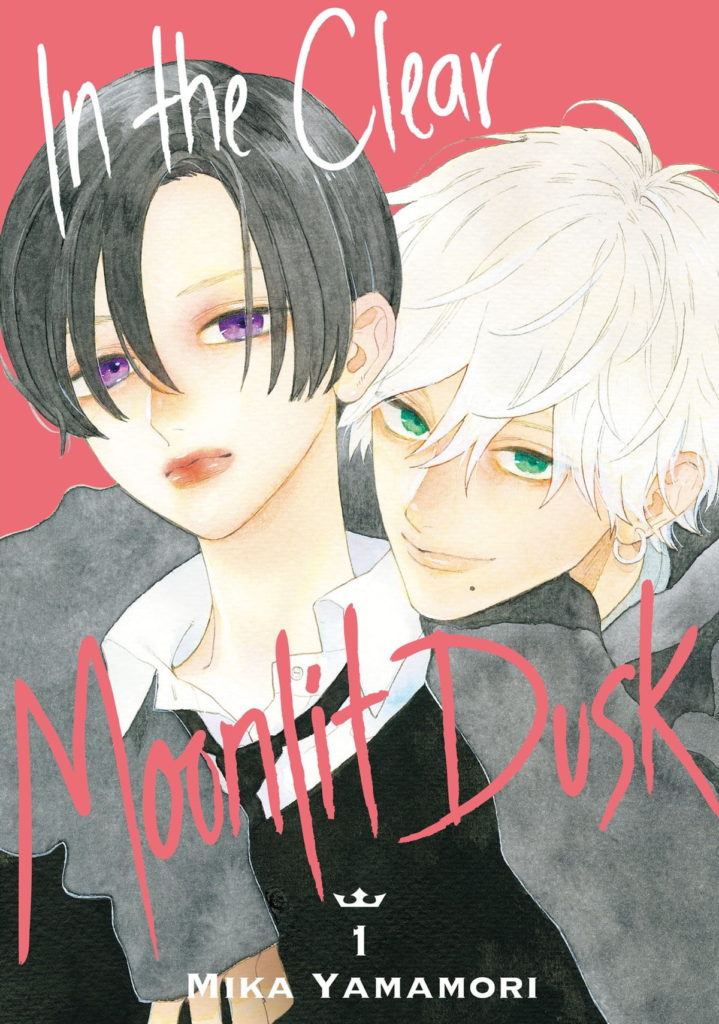
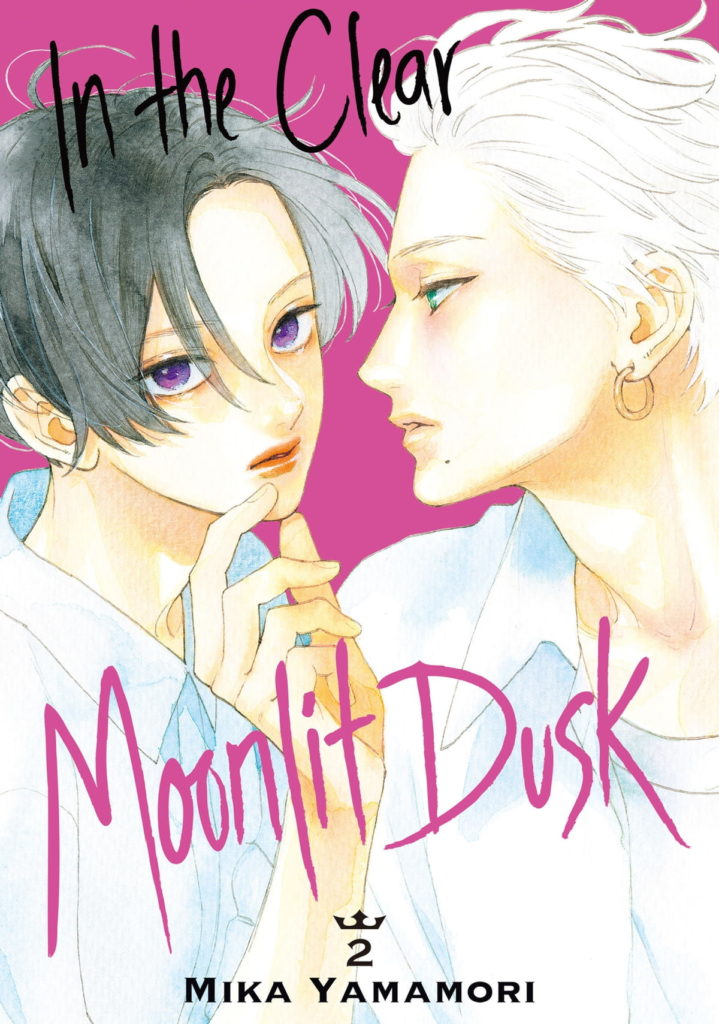
In The Clear Moonlit Dusk vol. 1 & 2
By Mika Yamamori
Translated by Jessica Latherow / Local Manga
Lettered by Viet Phoung Vu / Local Manga
Published by Kodansha (Print/Digital)
Audio editing by David Brothers. Show notes by Christopher Woodrow-Butcher and Deb Aoki
Before We Get Started:
We refer to a lot of characters this episode randomly by their first and their last names. Luckily, the second volume includes this introduction of the characters, with first AND last names, and a brief introduction. Maybe you will find it helpful!
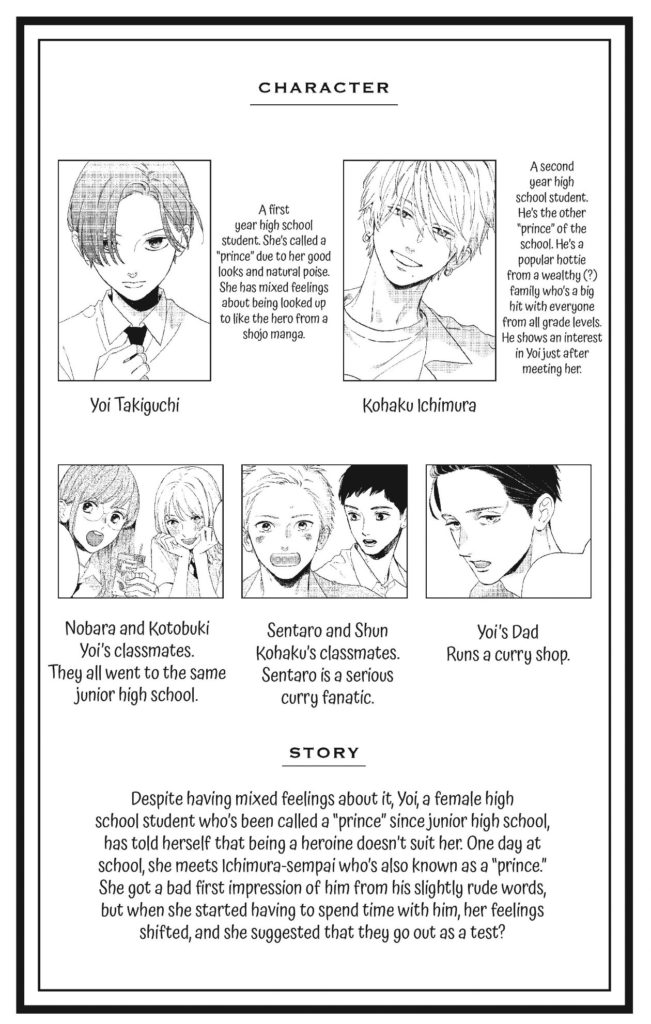
Okay! Now you’re ready, let’s go:

2:00 Here’s a bit about In the Clear Moonlit Dusk’s Mika Yamamori!
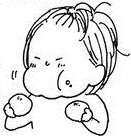
Mika Yamamori hails from Ishikawa Prefecture, on the Northern coast of Japan (directly north of Nagoya). Yamamori began her professional manga career in 2006 with the one-shot Kimi no Kuchibiru kara Mahou (The Magic from Your Lips) in Shueisha’s Margaret magazine. Her first series was Sugars (2008-2011), but it was her next series after that, Daytime Shooting Star (2011-2014) that would rocket her to success. The series ran for 13 volumes and was well-received… but a few years after it finished it got a live-action drama adaptation in 2017 that was hugely popular around the world. This catapulted the manga (and manga-ka) to even greater success. So much so that VIZ actually acquired the title and published [most of] it in English, despite it being about a love triangle between two students and a teacher (yowza). It’s not for everyone. Lol.
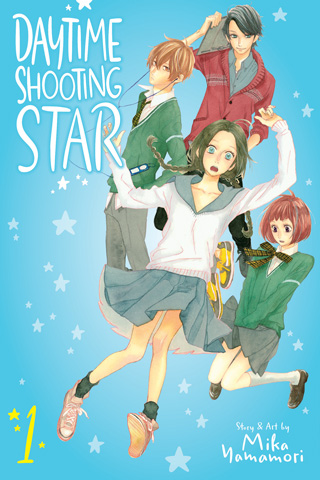
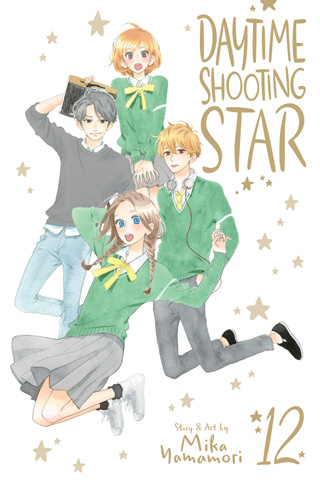
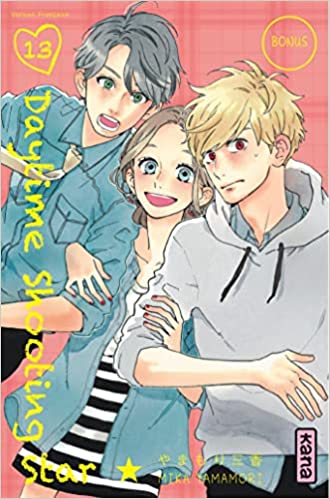
Yamamori followed up her mega-success with Tsubakicho Lonely Planet (2015-2019), and then switched teams from Shueisha and Margaret, where all of her work to date had been published, and launched In the Clear Moonlit Dusk with Kodansha in their Desert magazine for work that blurs the line between shojo and josei manga. There are 4 volumes published as of writing, and the series shows no signs of slowing down. The series is available in English from Kodansha in print and digital.
2:10 Speaking of Kodansha, here’s how they describe this title:
Yoi Takiguchi has long legs, a deep voice, and a handsome face…in other words, Yoi is such a good-looking guy that most people don’t notice or care that she is, in fact, a girl. Indeed, she’s had the nickname “Prince” as long as she can remember. That is, until she met Ichimura-senpai…the only person who’s really seemed to see her for herself. To her surprise, she’s not sure how to handle this new relationship, especially when her newfound friend is a prince himself (and a guy prince, at that). The story of the two high school princes starts here!
-Kodansha
4:50 The SD/Super-deformed moments in this book are really cute and well done…

…and now I realize I dropped “SD” and “Super Deformed” in there without any explanation! So, to explain briefly, super-deformed or SD (or sometimes called “Chibi”) is when characters are drawn in a simplified, ‘cute’, and usually shorter/squatter/smaller. If a traditional human is roughly 7 heads tall, a character drawn SD style is usually drawn 3 heads tall, give-or-take, with a big old head. The effect of temporarily transforming characters to SD is to sort of remove the actions from the ‘main’ plot/proceedings, like a stage whisper, or when a character in a Shakespearean play talks directly to the audience? Except super-cute.
5:04 Kind of an aside, but 70s shojo manga covers are just so, so good.
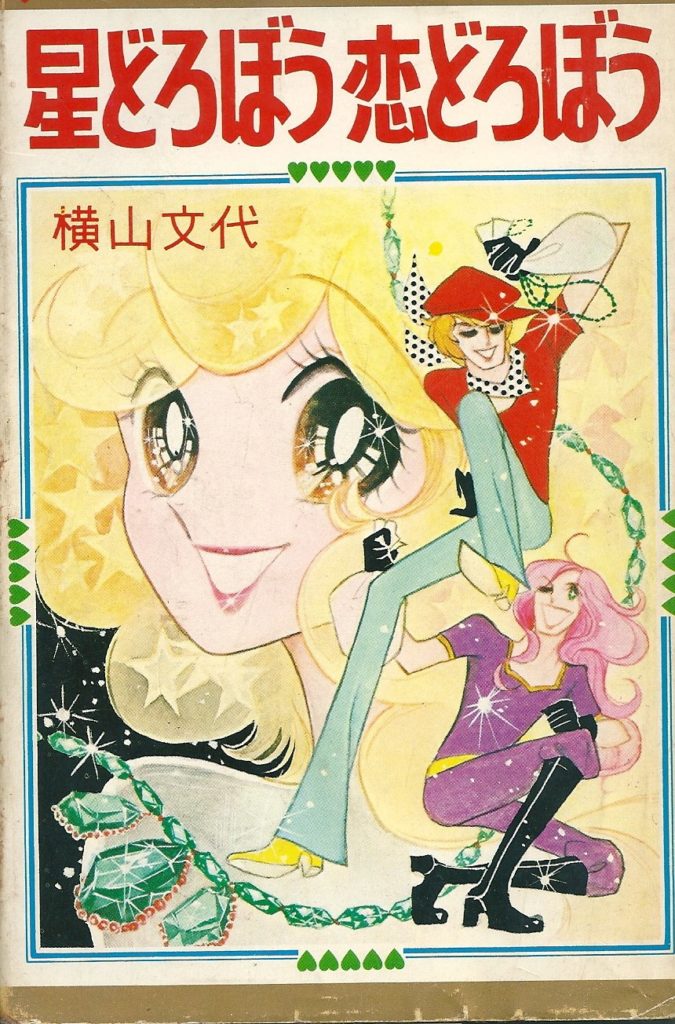
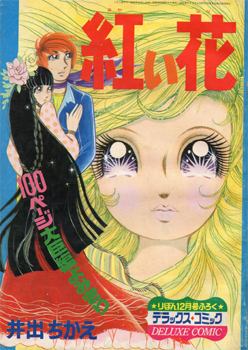
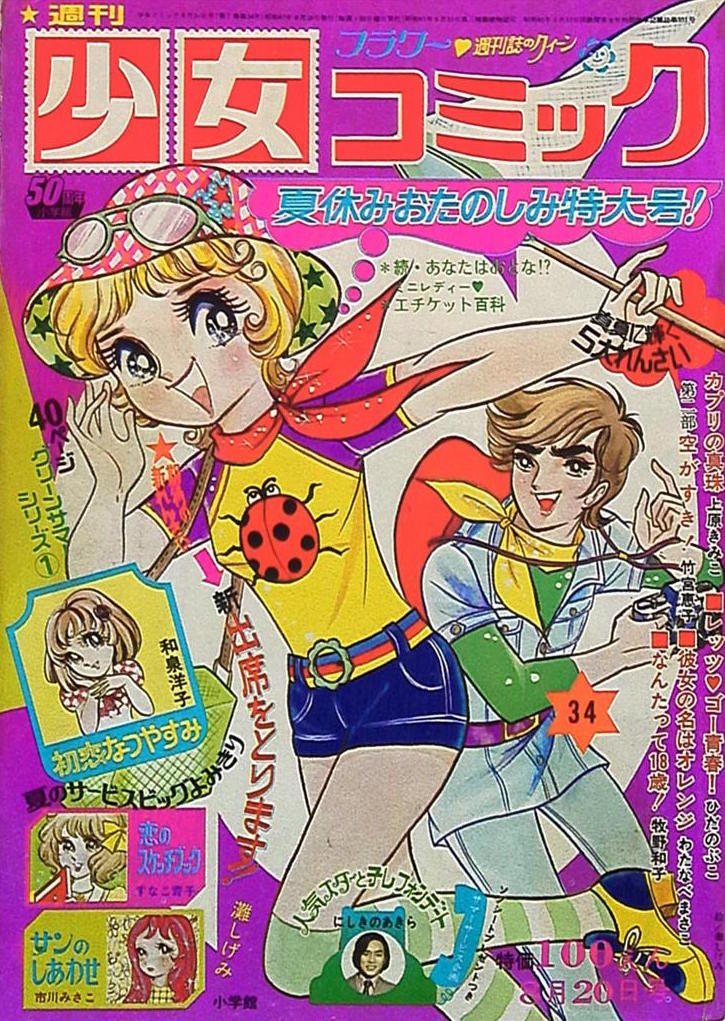
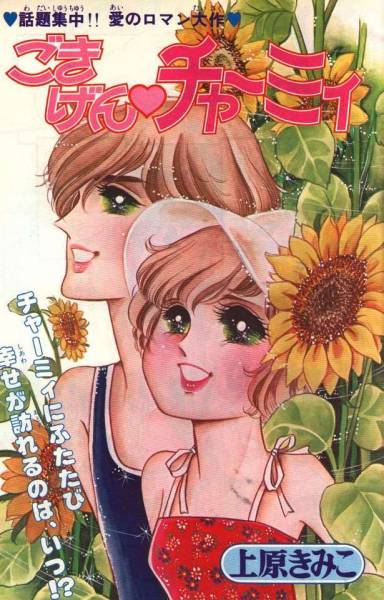
5:15 Honestly the devastating looks in this manga really are fantastic.
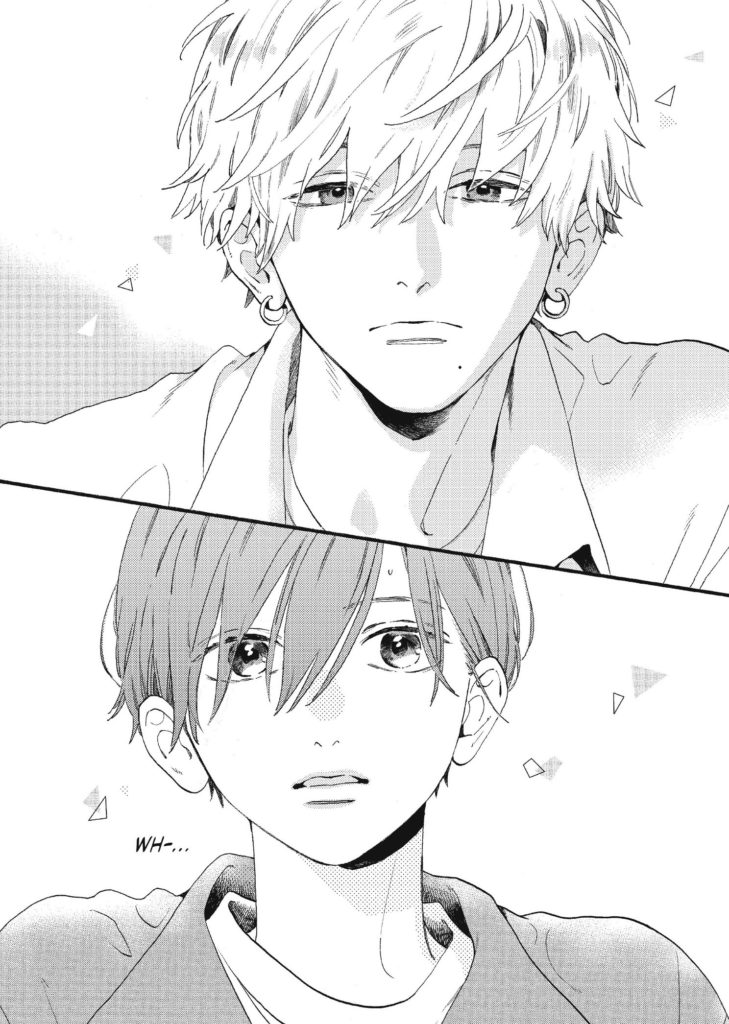
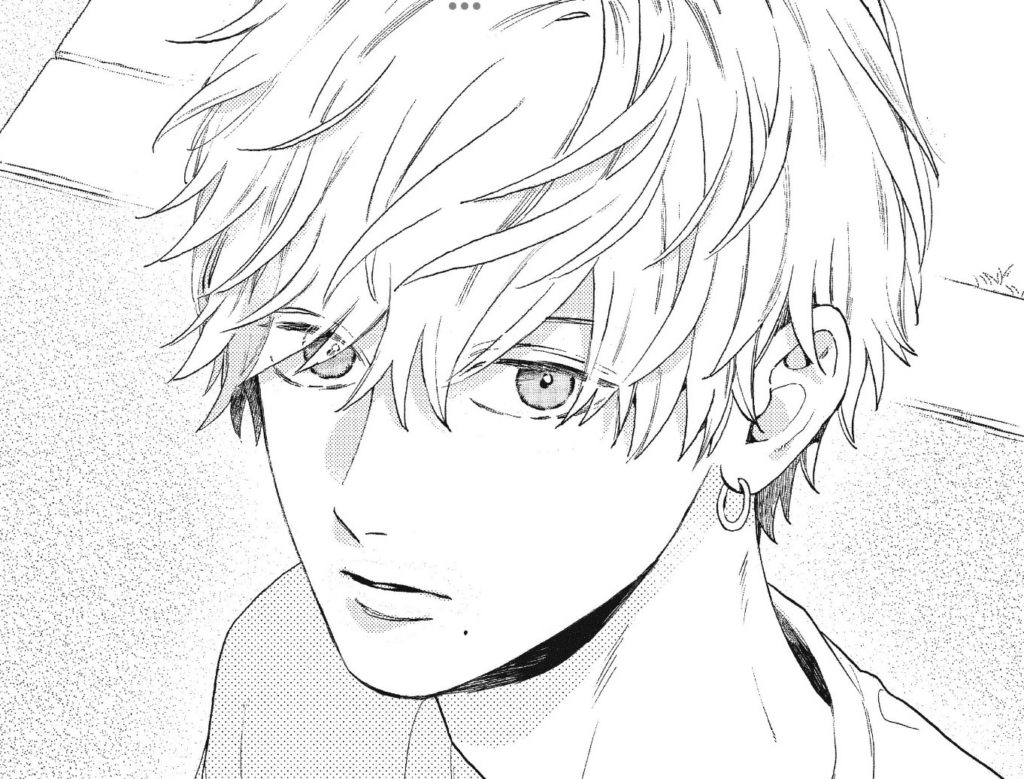
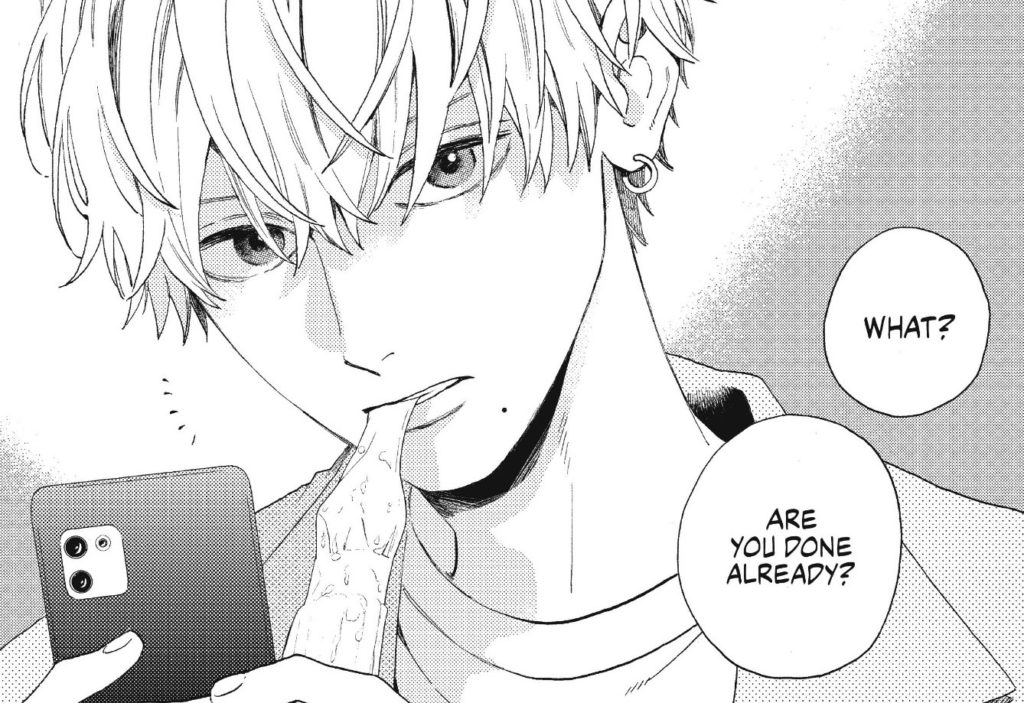
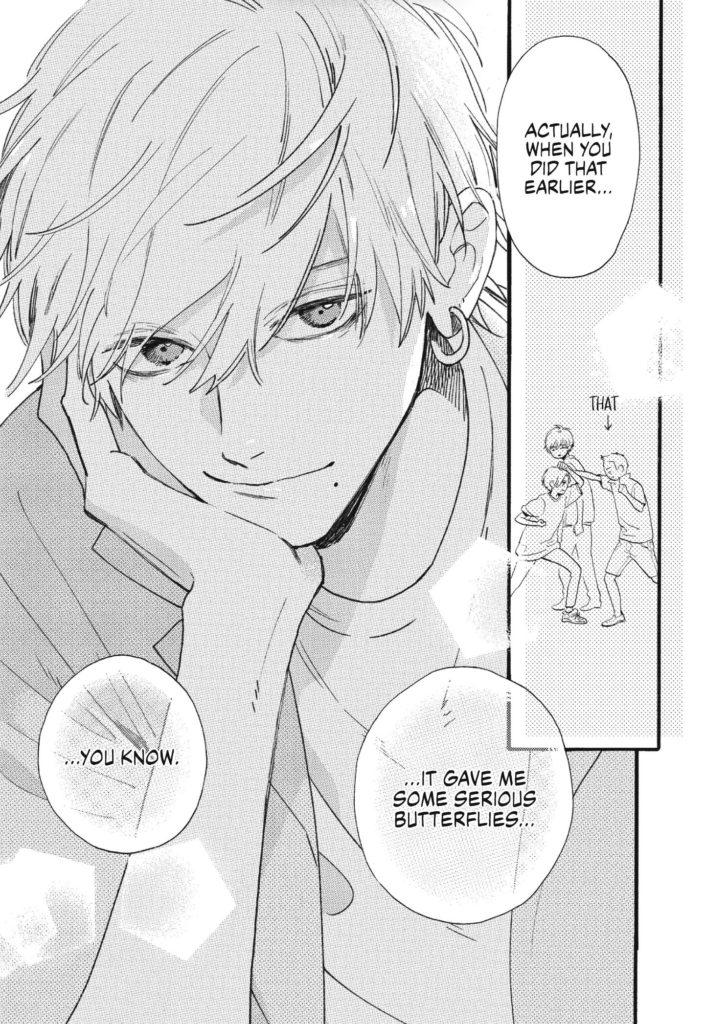
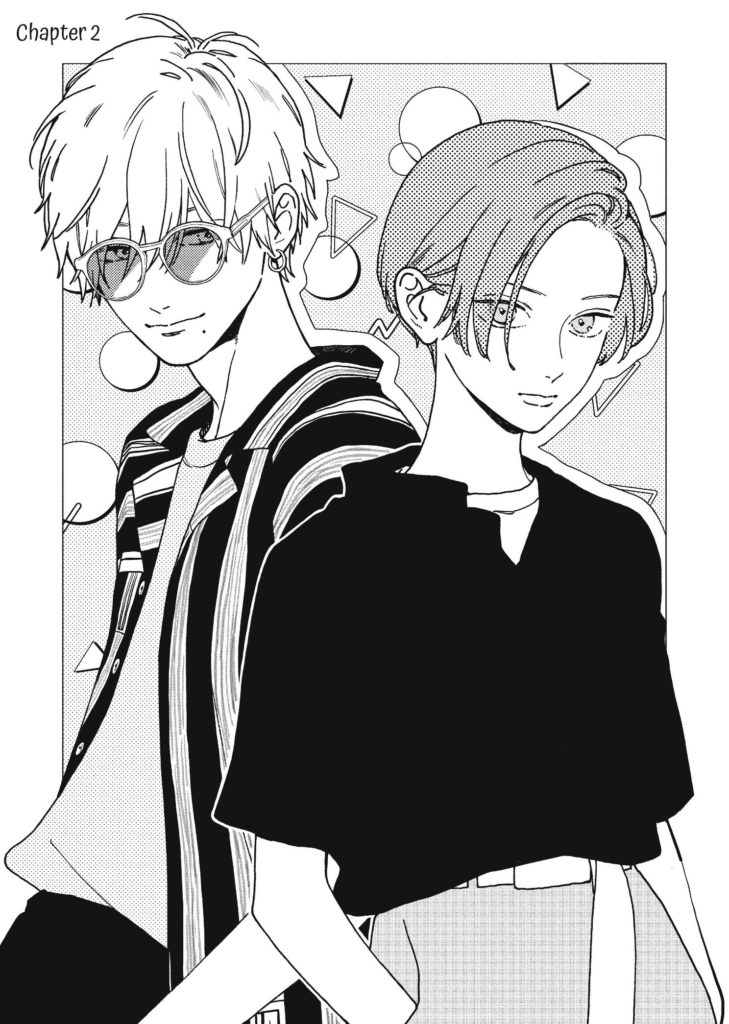
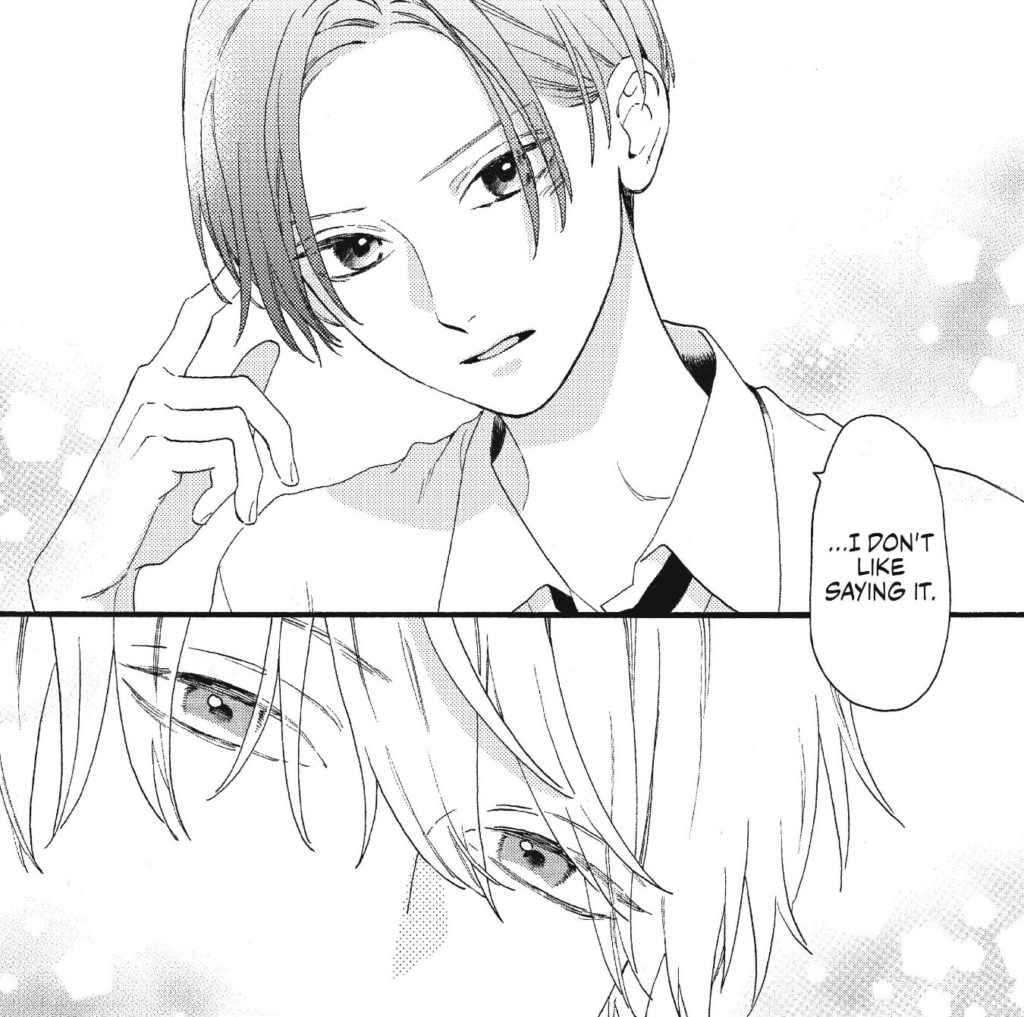
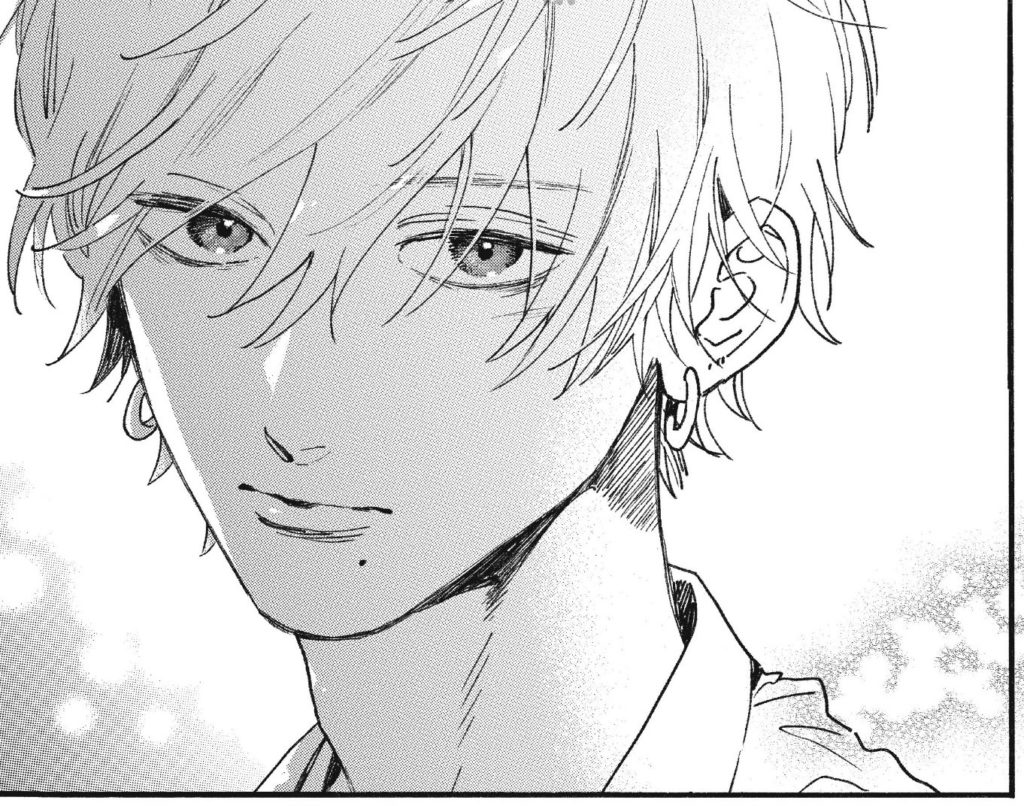
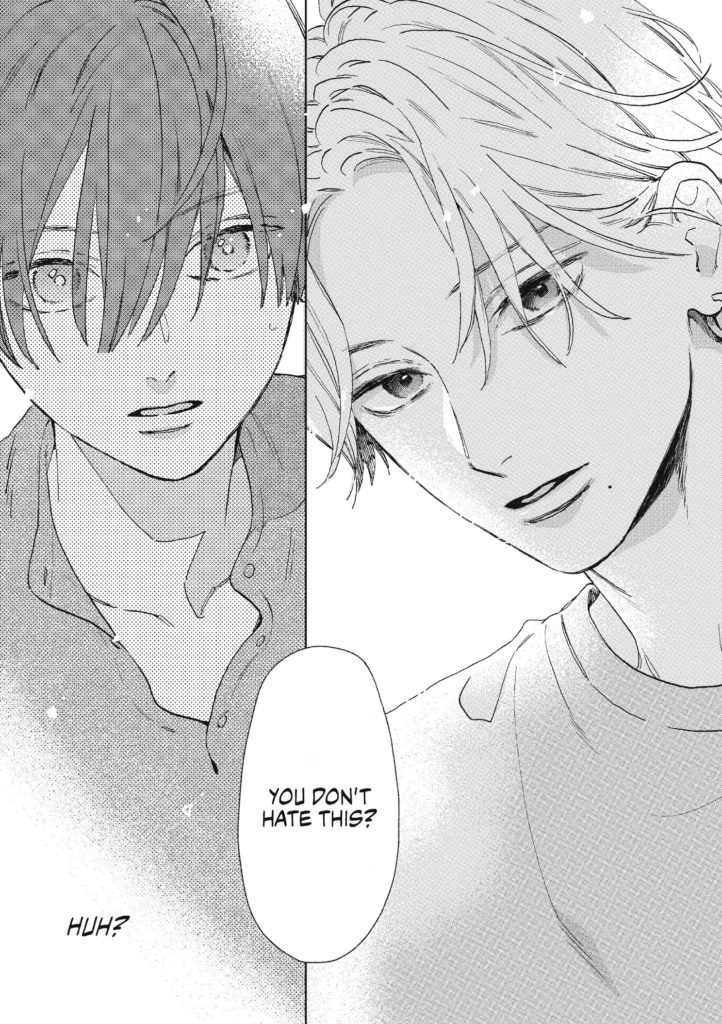
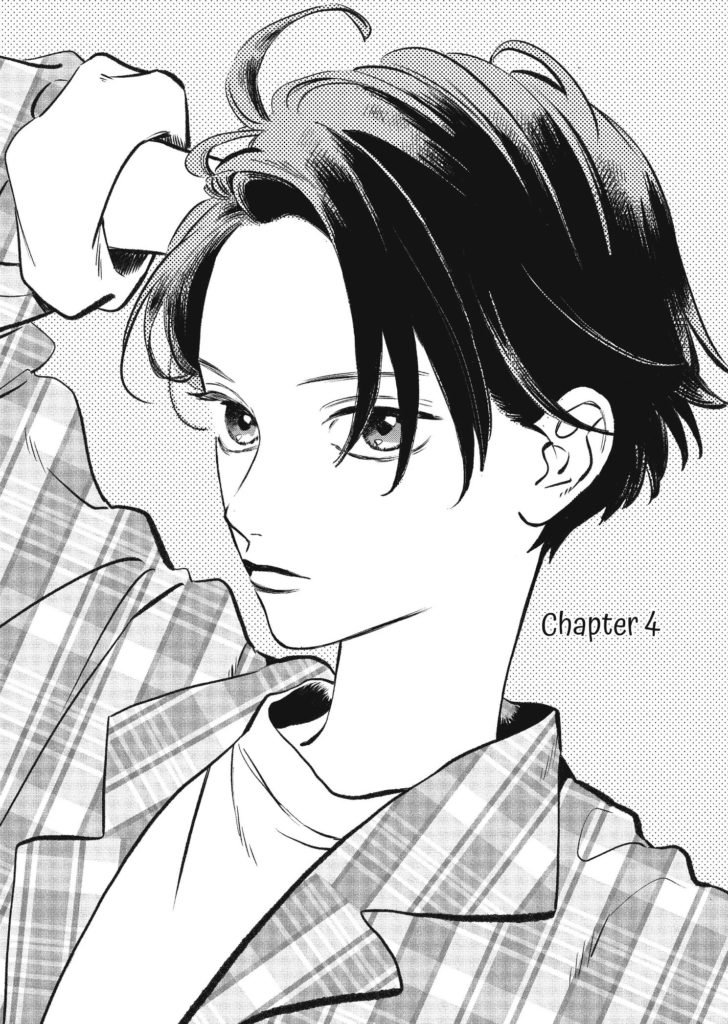
Blue Steel, blue steel, blue steel
5:28 As a personal aside, the curry-loving friend is a cutie and I’m glad we got more of him in volume 2.

5:54 “A little messed up,” is what I said there.I promise. Looooottttts of sparkles this episode…
7:33 [Deb:] “Boyfriend, can I have some?” A funny aside: There’s instant curry that plays off the Japanese pun of “kare” (him) and “kare” (curry): Instant Boyfriend curry anyone? More on this from Sora24 News.
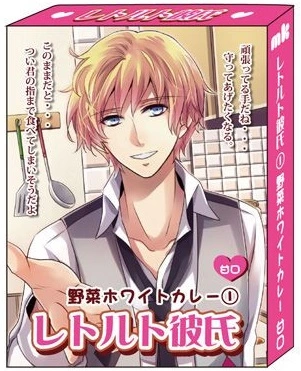
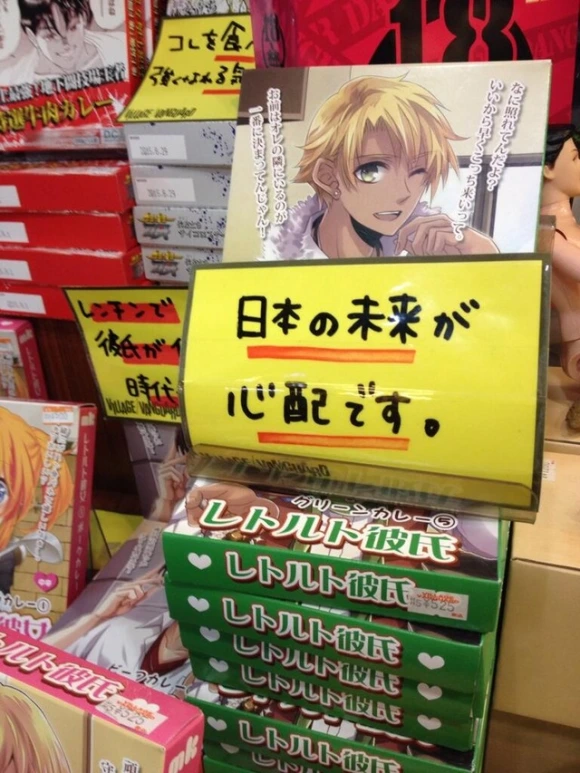
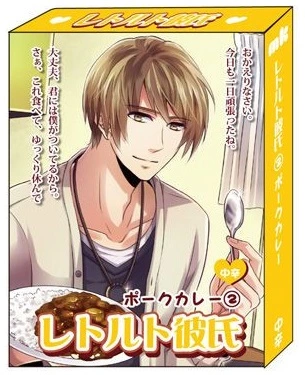
7:43 David mentions this great James Bond-esque joke, from Page 98, volume 1, where Yoi is hiding behind a curtain
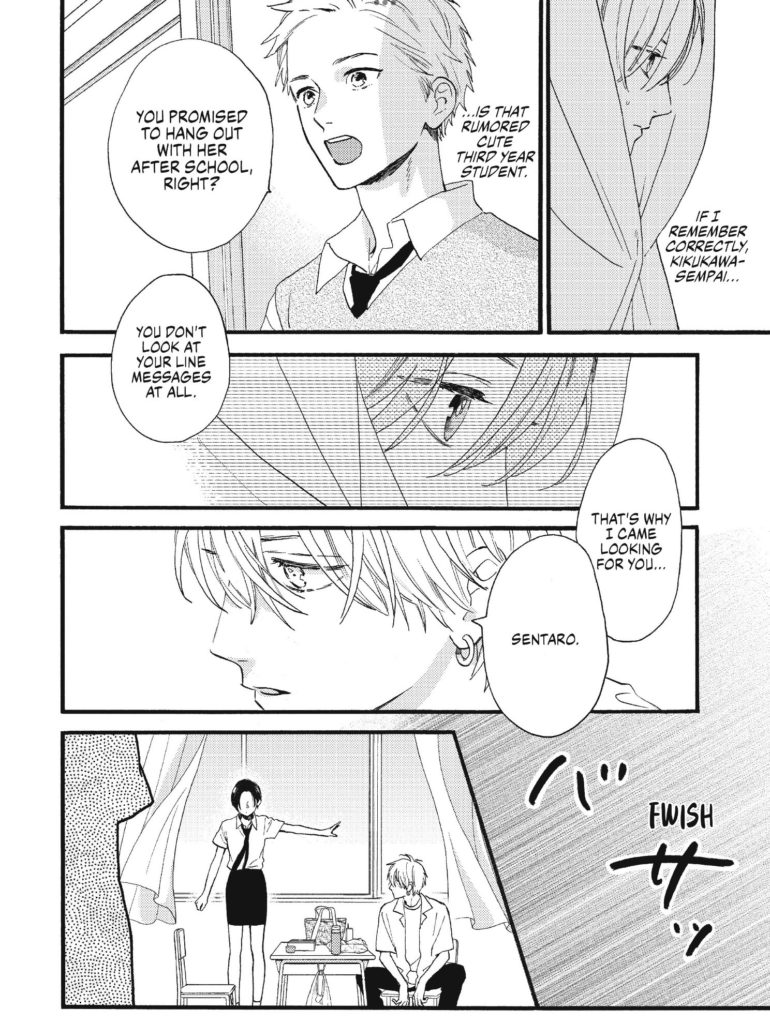
8:40 [Deb:] “Her knowing karate and being very casual about it” – AND that it makes Kohaku kind of fall for Yoi? I’m down wit’ dat.
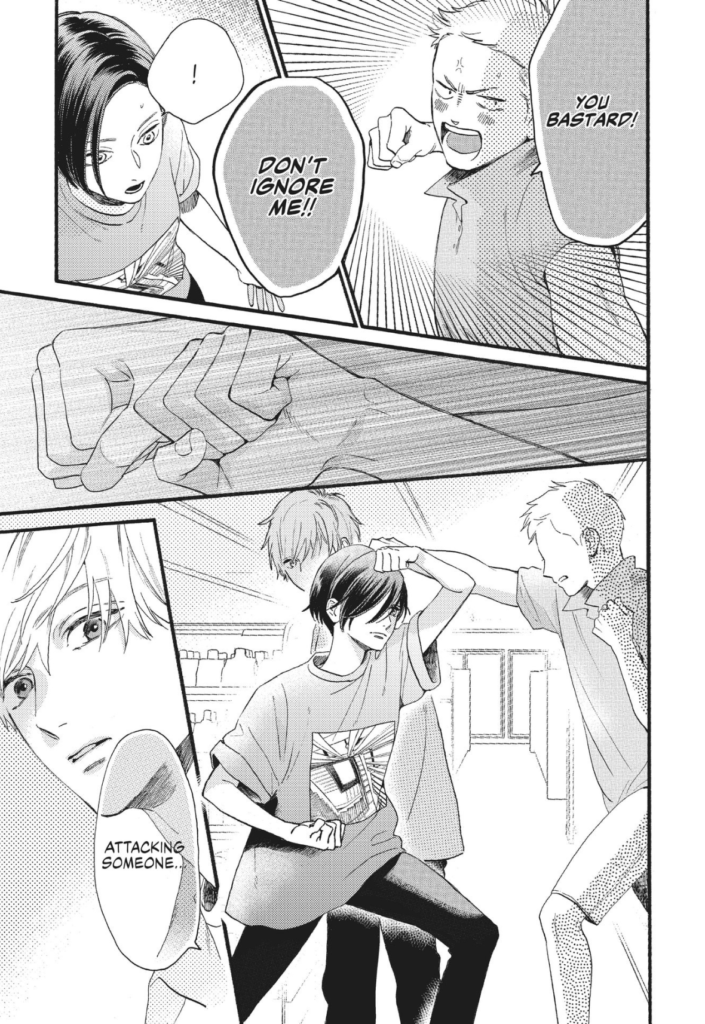
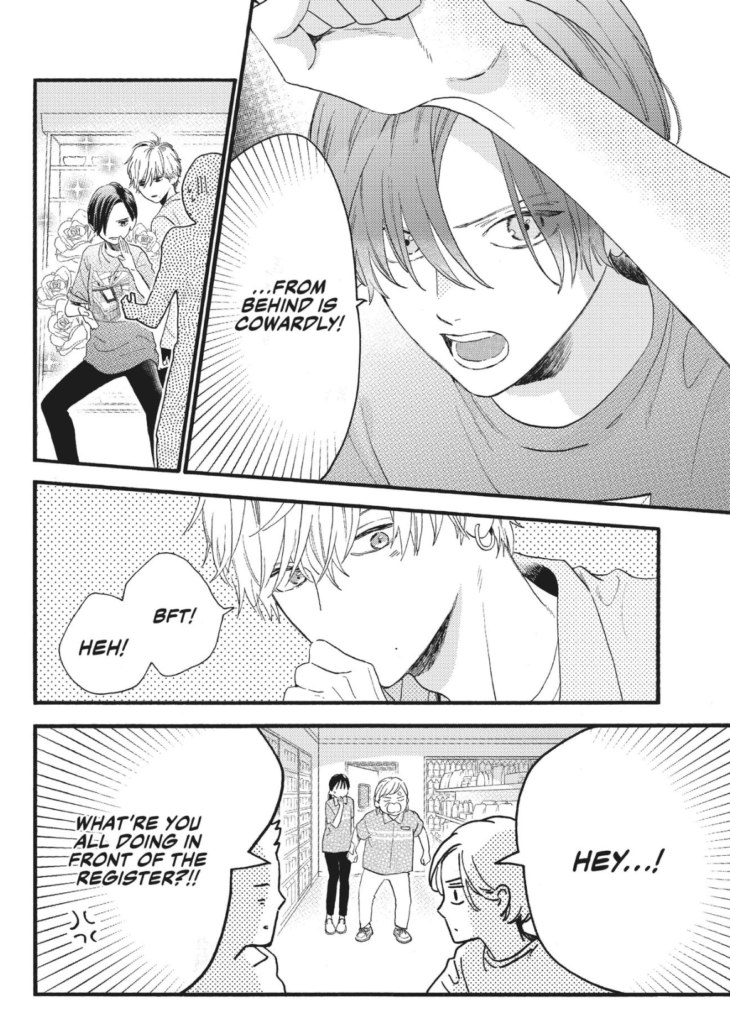
[Deb:] Also, “dropping the handkerchief and the sound effect is “effect”? Here you go:
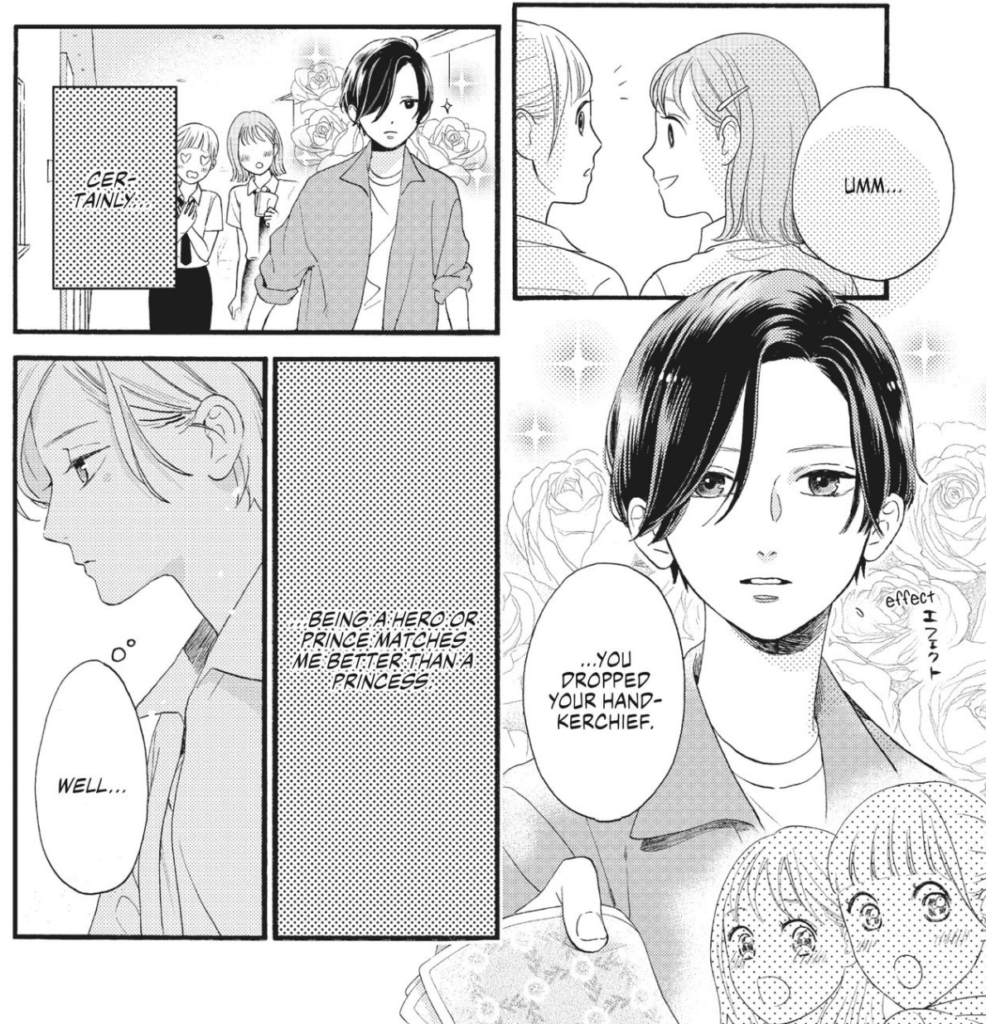
11:35 Chip is kind of over the wide-eyed, exasperated/confused/terrified girl trope in shojo manga. Which, I get it, but that’s like being a bit over superhero comics where the protagonist’s dad is dead. Like, good luck.
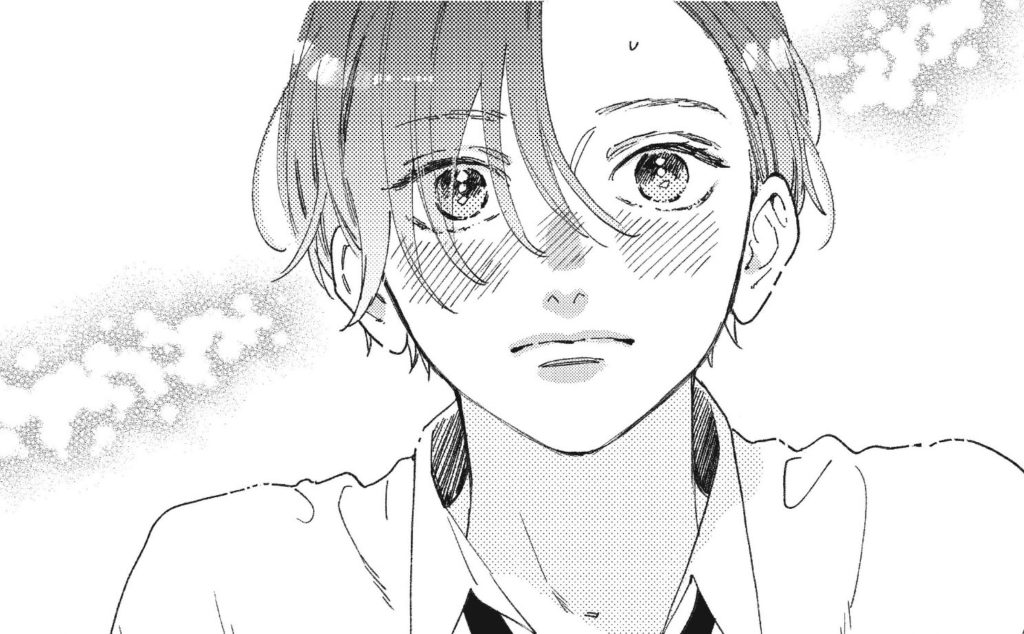
12:30 We’ve referenced it a few times, but Chip was introduced to the concept of the ‘princely girl’ character in manga during our Monthly Girls Nozaki-kun episode. You can read those show-notes here, but basically it’s a female character in manga (and real life) who exhibits all of the positive characteristics that are usually assigned to male characters. Here’s a couple images from that manga so you can see what we’re getting at.
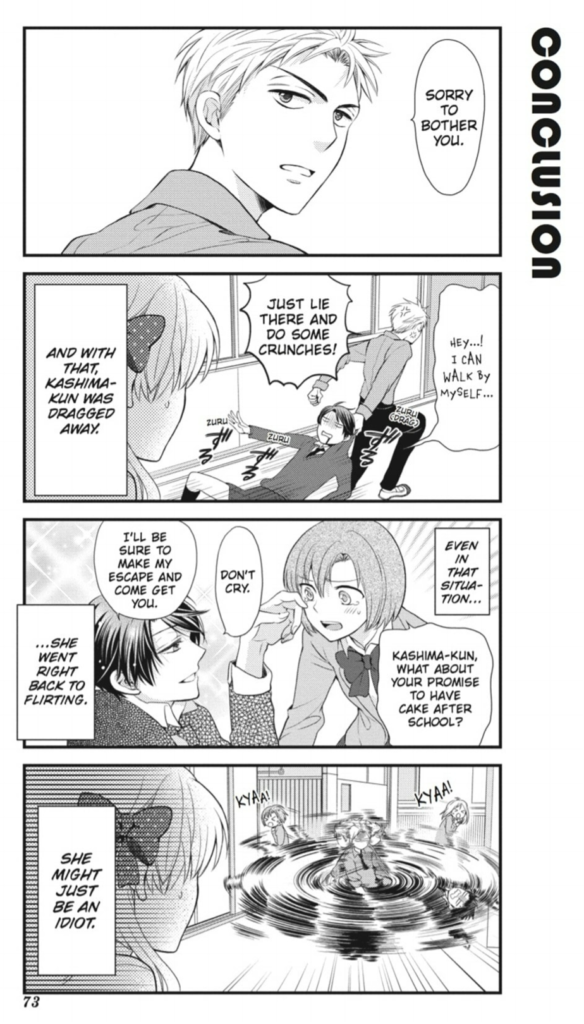
Even if you don’t wanna check out the show notes for that, DO click through and check out this video by Erica Friedman on the history of the Girl Prince trope in manga. 🙂
14:55 So yeah, there’s a lot good and bad with the art in this one. One of the… not great… things are the backgrounds. I get dropping backgrounds for expediency and as part of the form of shojo manga… But in sequences like the one below, you have a storytelling opportunity to better-communicate Ichimura’s wealth by showing how large/opulent his house is. Instead we just get close-cropped medium shots.
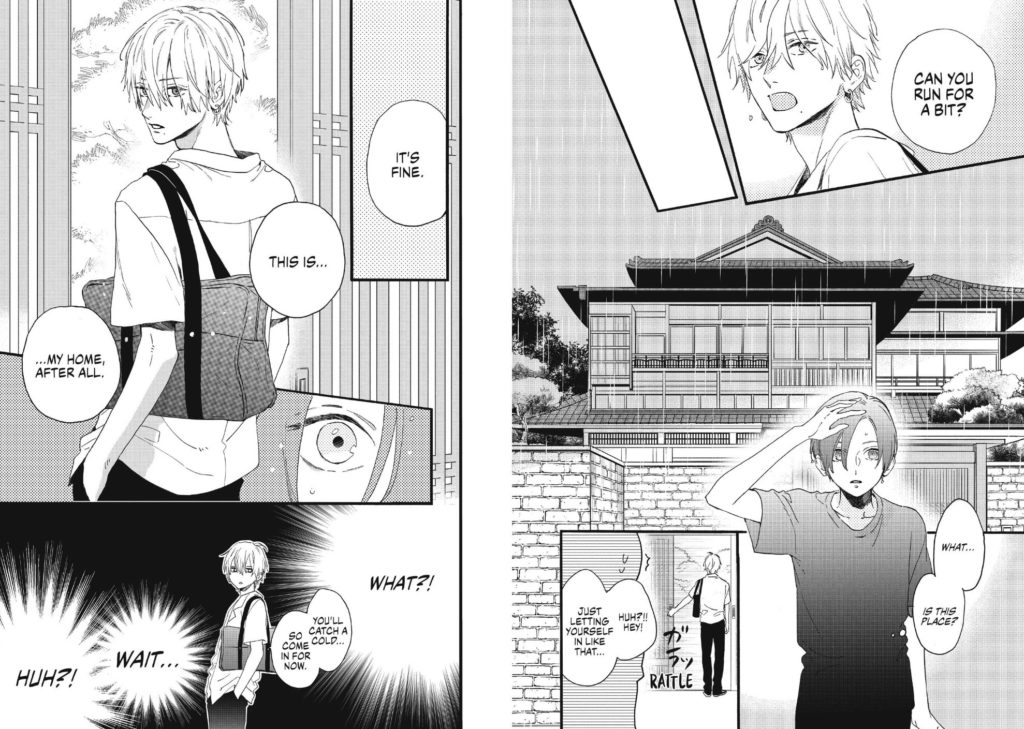
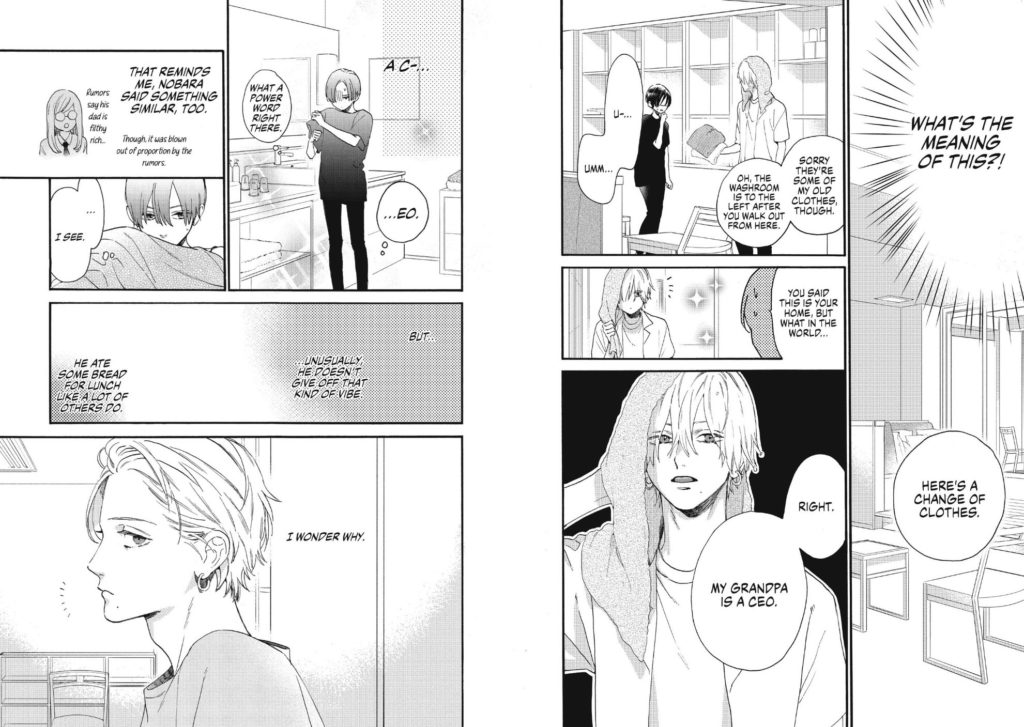
But some of the good stuff? Well like we said, the characters, the fashion, the looks, but also the really beautiful art touches like the flowers appearing behind people, and the jokes they make about that:
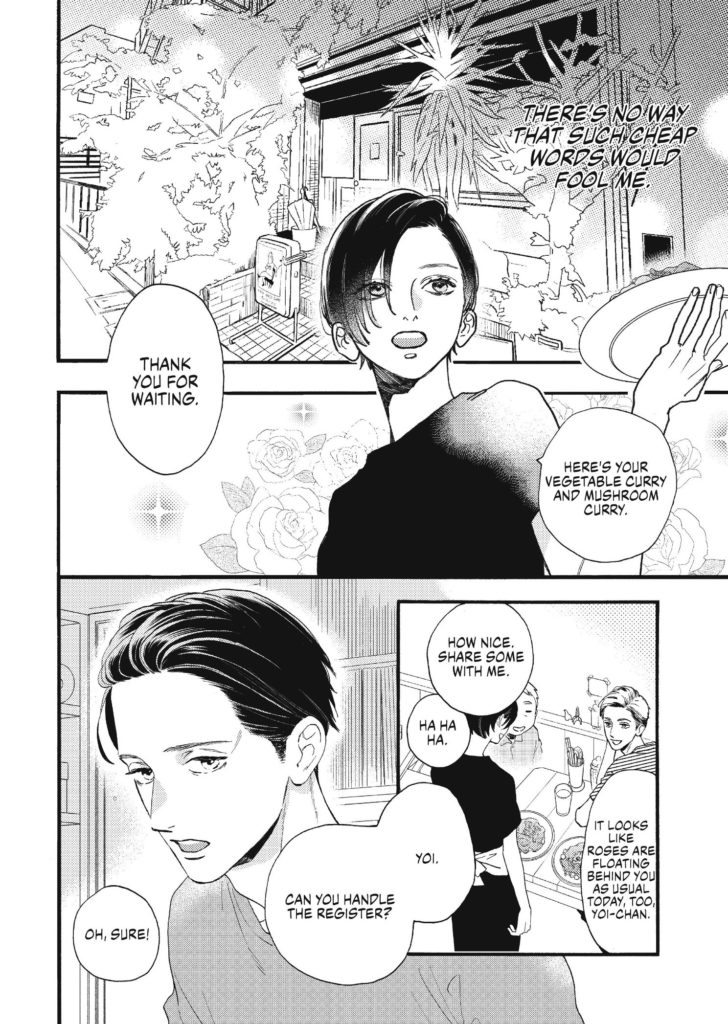
15:50 Good point here, that the two leads, the princes, are very similar not only as people, but as archetypes, particularly as they have similar friend groups, and much more.

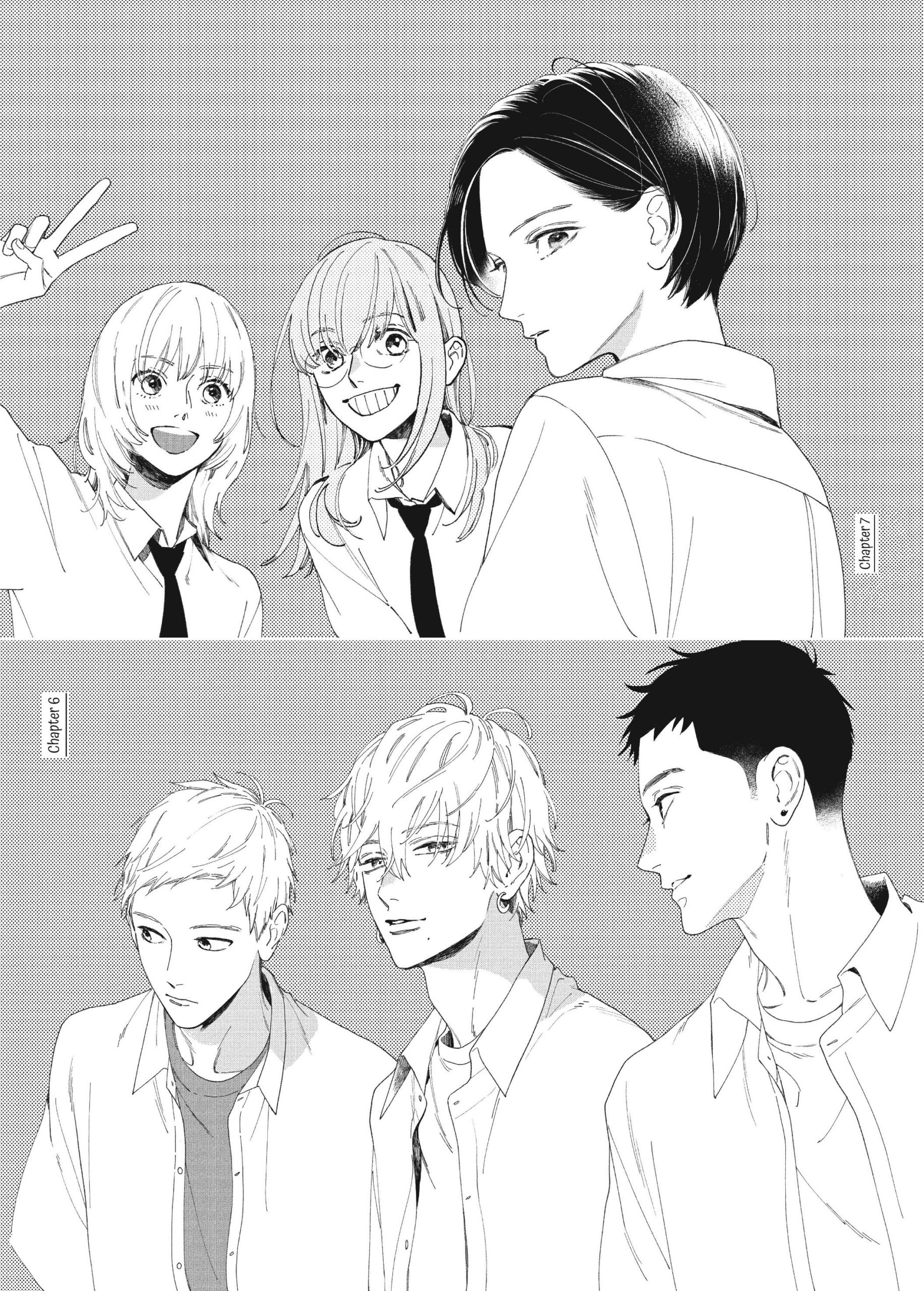
17:00 #NotAllDads
18:45 I think Chip and David are right, there is a real stiffness to some of this dialogue. “They all talk like 80 year olds,” is an exaggeration (for comedic effect!) but also yeah, there’s some stuff going on here. I do think some of it is on purpose, but some of it could’ve used a little bit of polish/localization.
[Deb:] Fruits Basket‘s premise starts out silly, but one reason why it’s such a favorite of shojo manga readers is that it transcends its silly premise to become a really touching story about people who have to overcome trauma and dysfunctional family dynamics to find the courage to fall in love. HOWEVER, it does take a while to get to that point so it’s tough to recommend to “Is it just one volume?” guy Chip.
18:55 Meanwhile, Deb is reminded of the manga Untouchable Midori-kun by Toyo Toyota, another Kodansha digital title, that features a really fun bit about roses appearing behind a character.
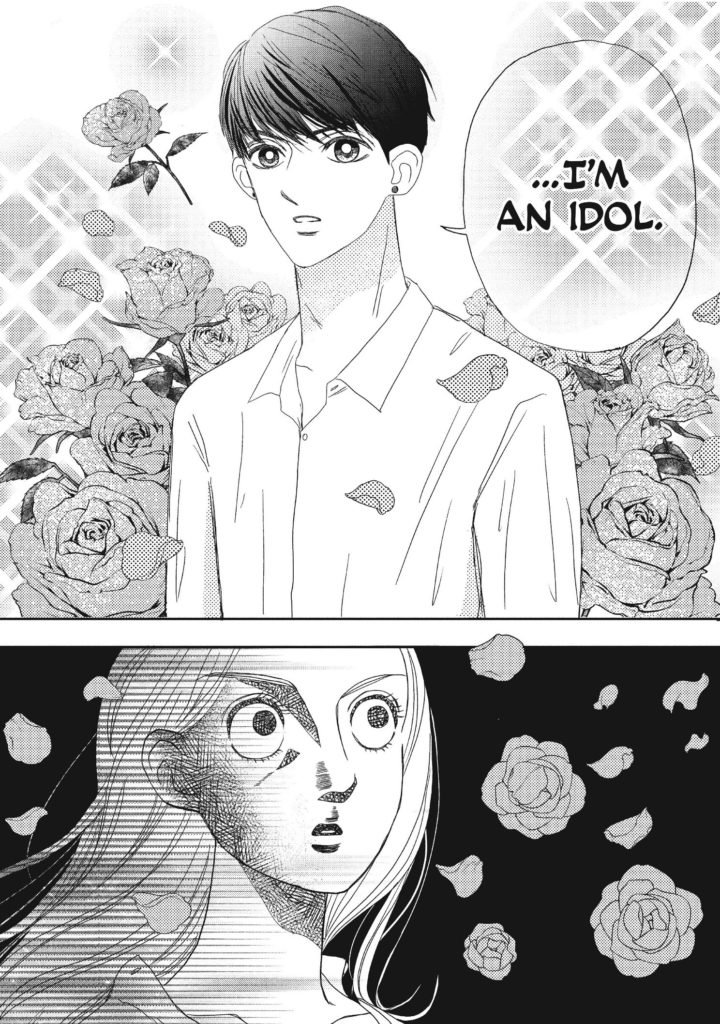
It’s a fun-sounding series, about an adult video actress who is reintroduced to her childhood friend, who’s now a squeaky-clean idol singer… and a virgin! Sparks fly, but they can’t be seen together. I actually bought the manga so I could get the screen cap to show y’all the gag above, Deb convinced me to get it. Maybe she convinced you too? 😀
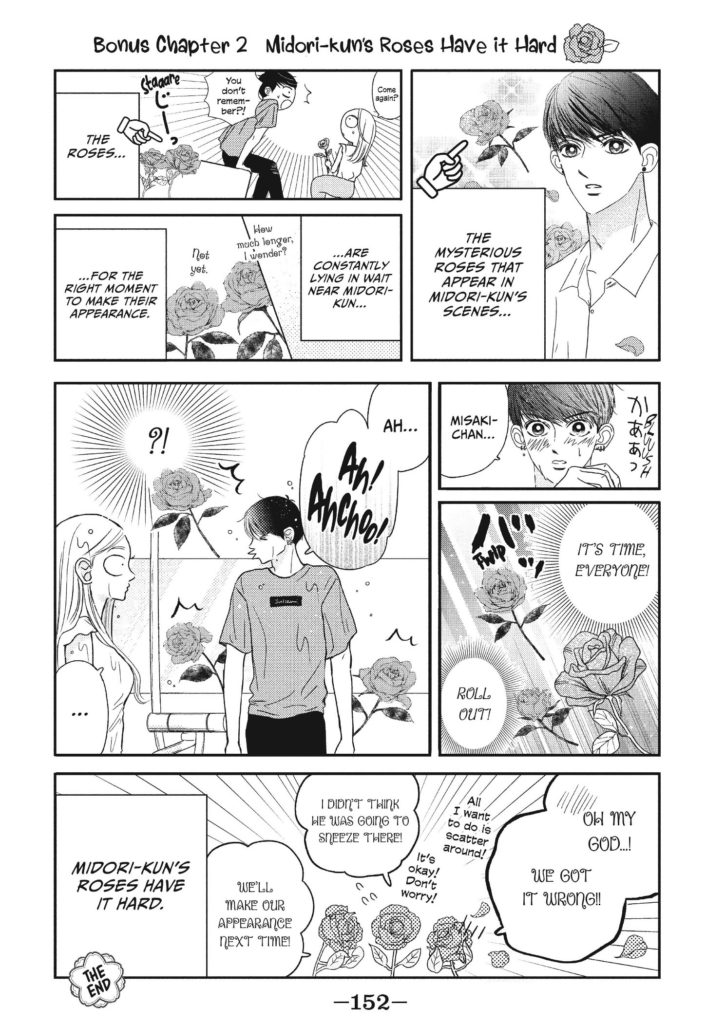
20:10 Since we mentioned it, here’s Daytime Shooting Star in live-action.
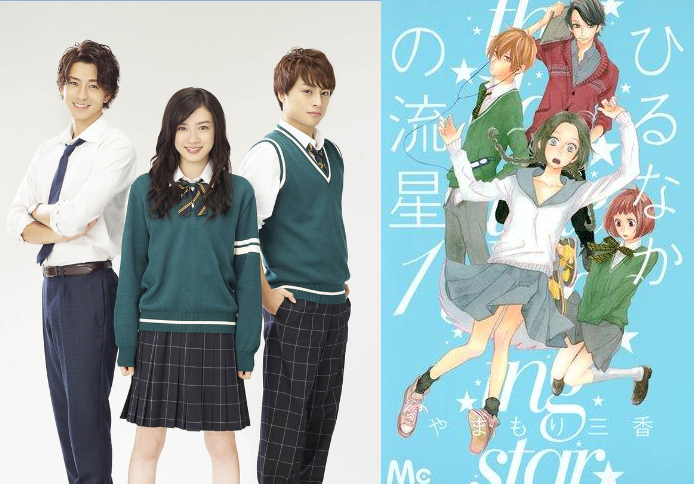
I got it wrong, there was a live-action feature film, but no K-drama. I do remember this series being heavily promoted in bookstores while I was in Japan during 2017 though, it was a big, big series.
On the other hand, there WAS a crossover commercial with Samantha Vega, the massive clothing and handbag brand. “Alan Shirahama and Mei Nagano who appeared in the collaboration event between Samantha Vega and the movie “Daytime Shooting Star” “
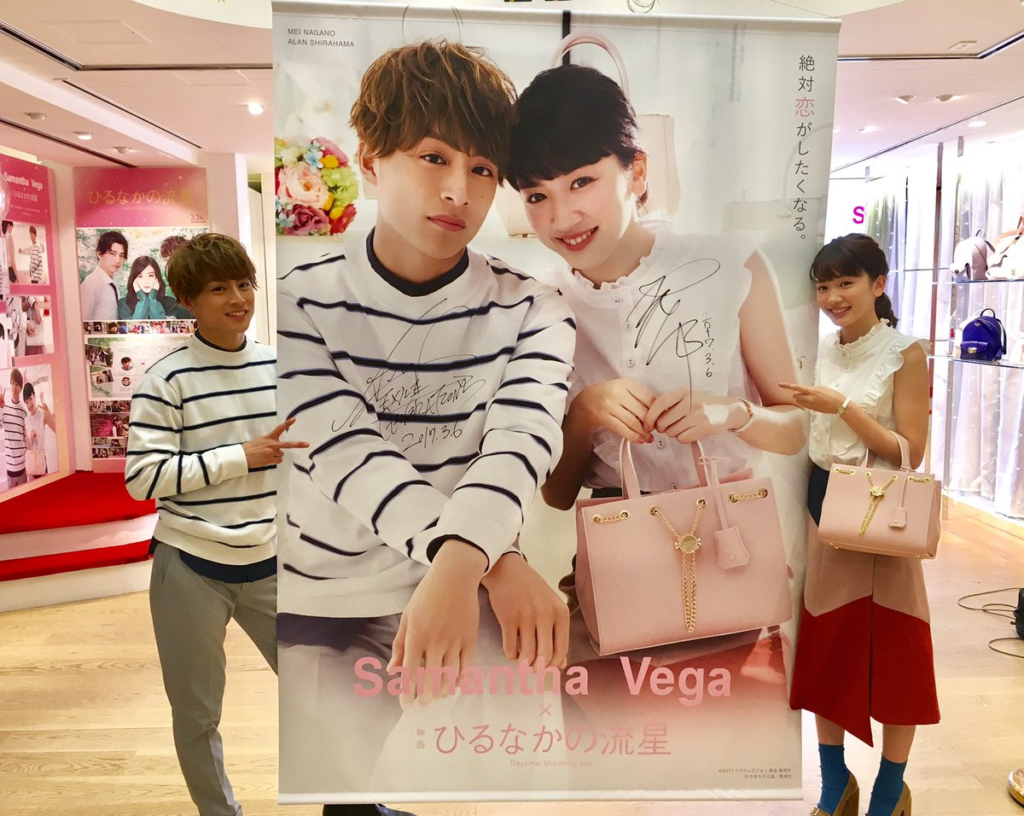
22:15 “You’re a crock of a prince, aren’t you?” Good on Deb and David for calling out the plot point, that the Yoi, the Princely Girl, is more of a Prince character than the dude playing at doing the same thing.
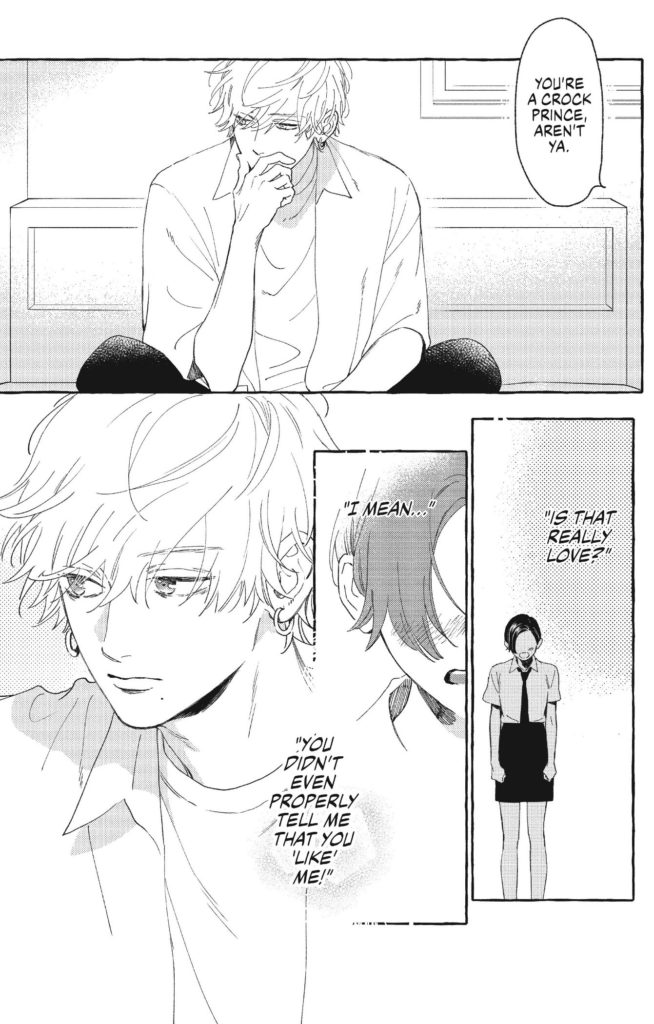
22:50 Christopher keeps mentioning Paradise Kiss by Ai Yazawa, which was the first sorta-shojo, sorta-josei series we discussed (we gotta talk about how those labels are deeply broken at some point). It’s a fun episode over all, lots of swears. The two main characters in that are both messy bitches that live for drama too. Listen to the episode and/or buy it now!
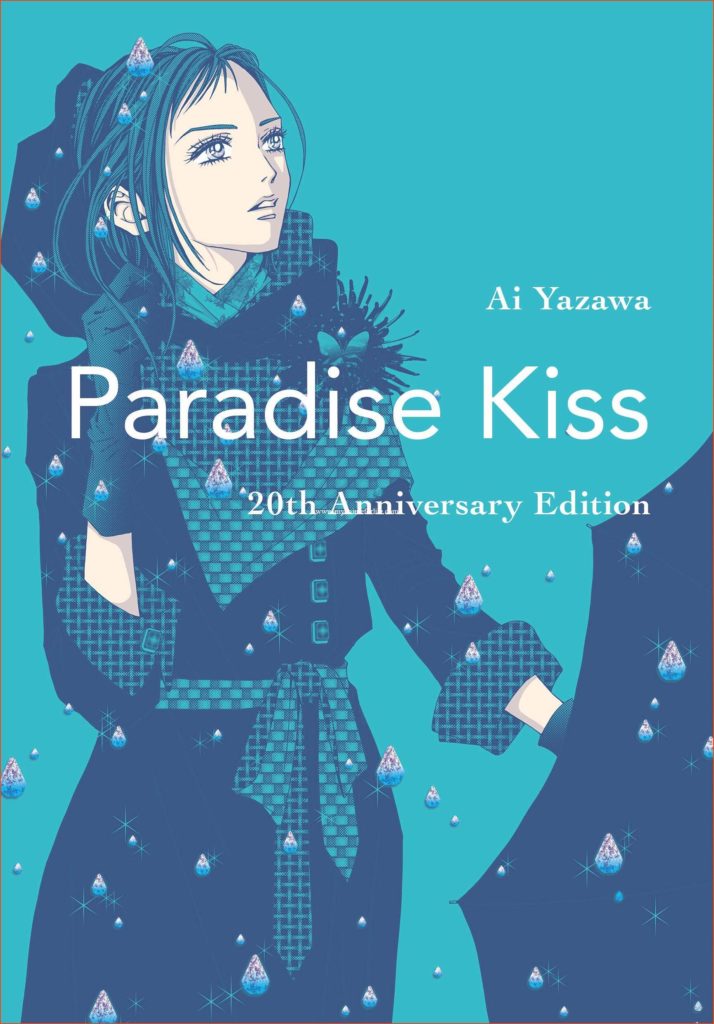
23:00 [Deb:] Here’s the screenshot from In the Clear Moonlit Dusk vol. 3, when Kohaku discovers that he now has a rival… Fun twist – the new guy’s last name is Ouji, which also means “prince!”
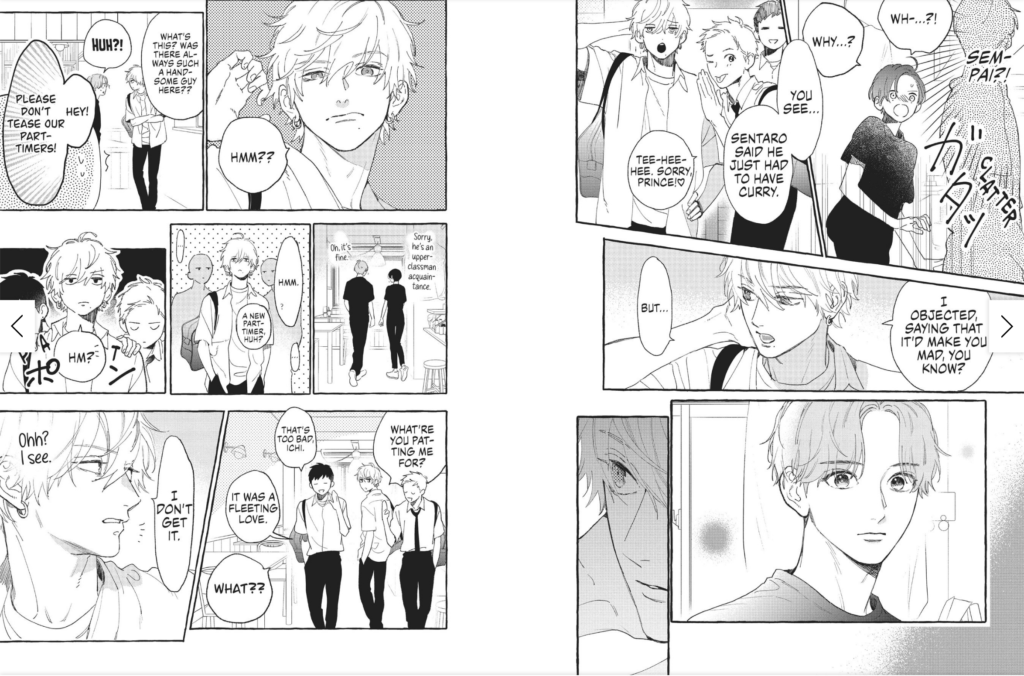
24:10 The art really is good. Some great illustrations of people that I personally enjoyed. Click for larger.
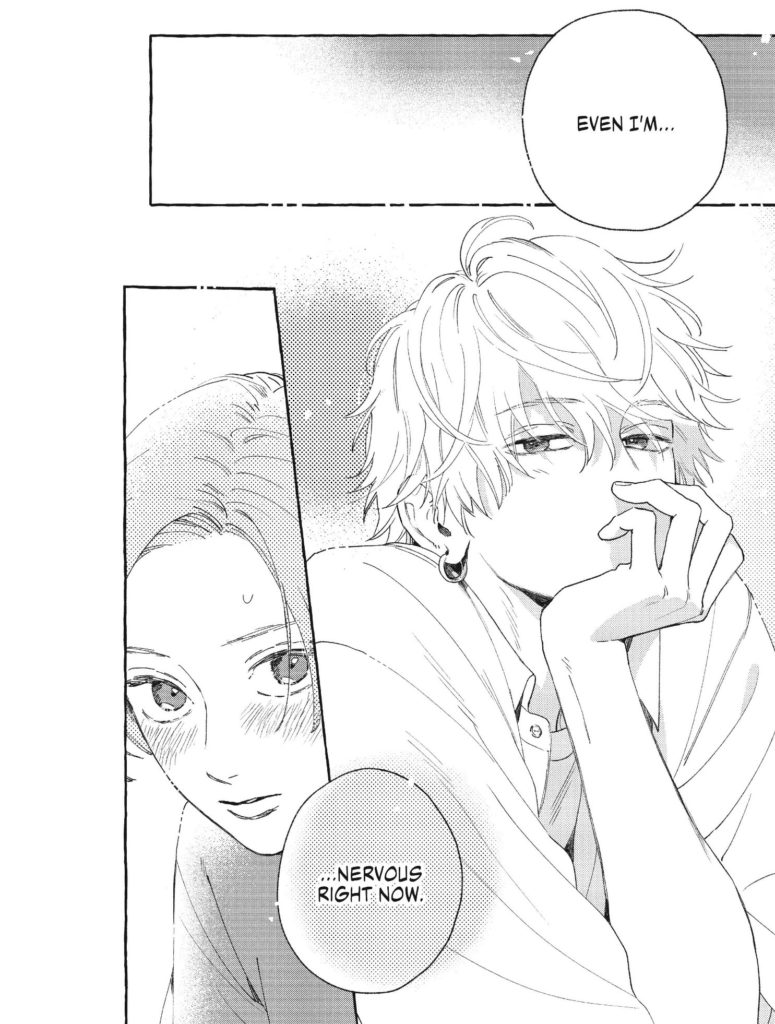
26:08 Another key-theme of this one that will really resonate? “There’s nothing I can do, this is what I look like.” Yoi’s accepted who she is and what her ‘role’ is in the high school hierarchy, even though she’s often uncomfortable with it. It isn’t negative exactly, and it can’t be helped, and a romance book about a girl who’s given up on romance is a great hook.

26:45 “Conversely, why isn’t everyone interested in her?” Yeah, this line hits with a thud.

29:30 David liked the characters going clothes shopping bits in Chapter 2, and now that I’ve read it, I agree it’s great!
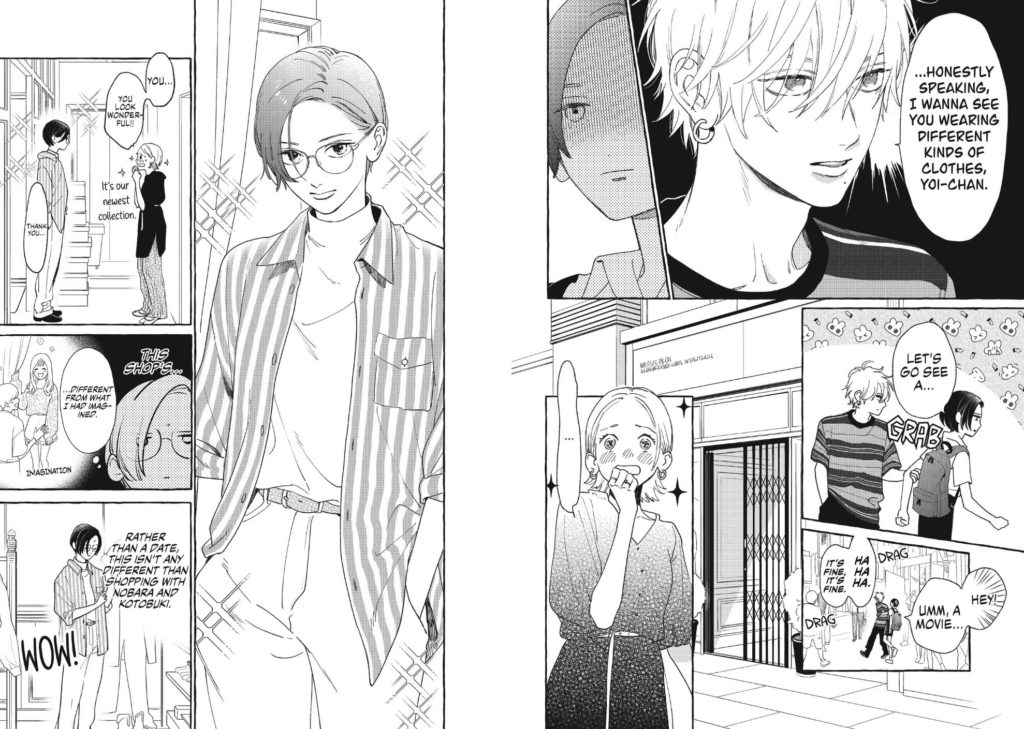
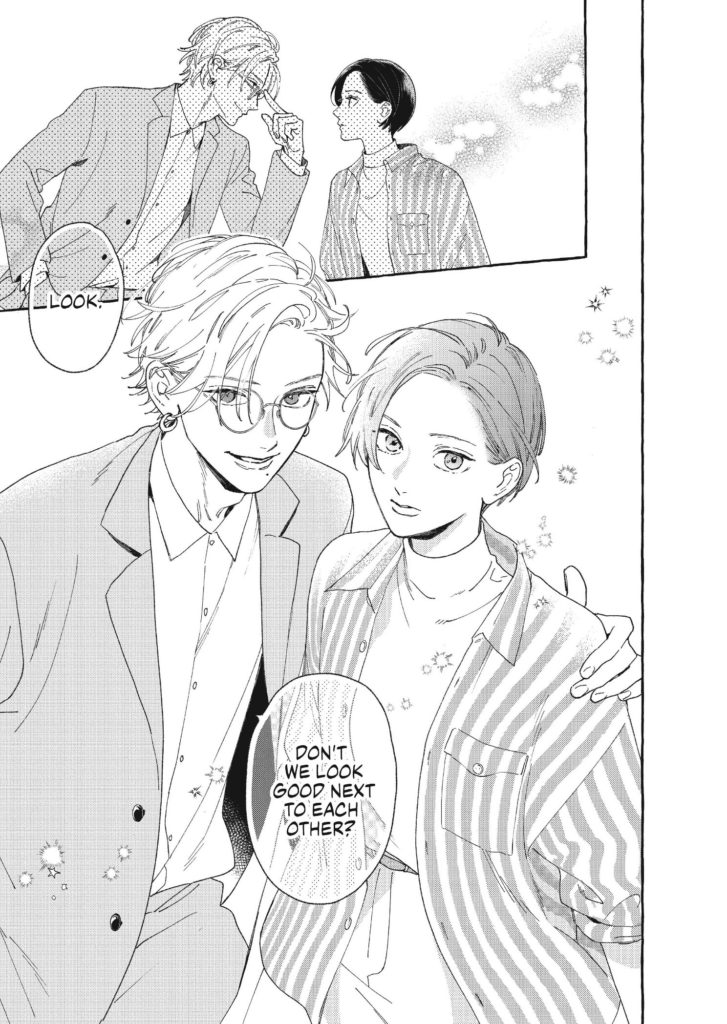
30:40 Some great moments of comedy in this book, like when Yoi can’t say ‘sex’ and switches to ‘intercourse…’

32:00 This guy? He’s an edgy guy. “I mean, two ear-piercings, light hair, and an always unbuttoned uniform… He might as well smoke weed.”
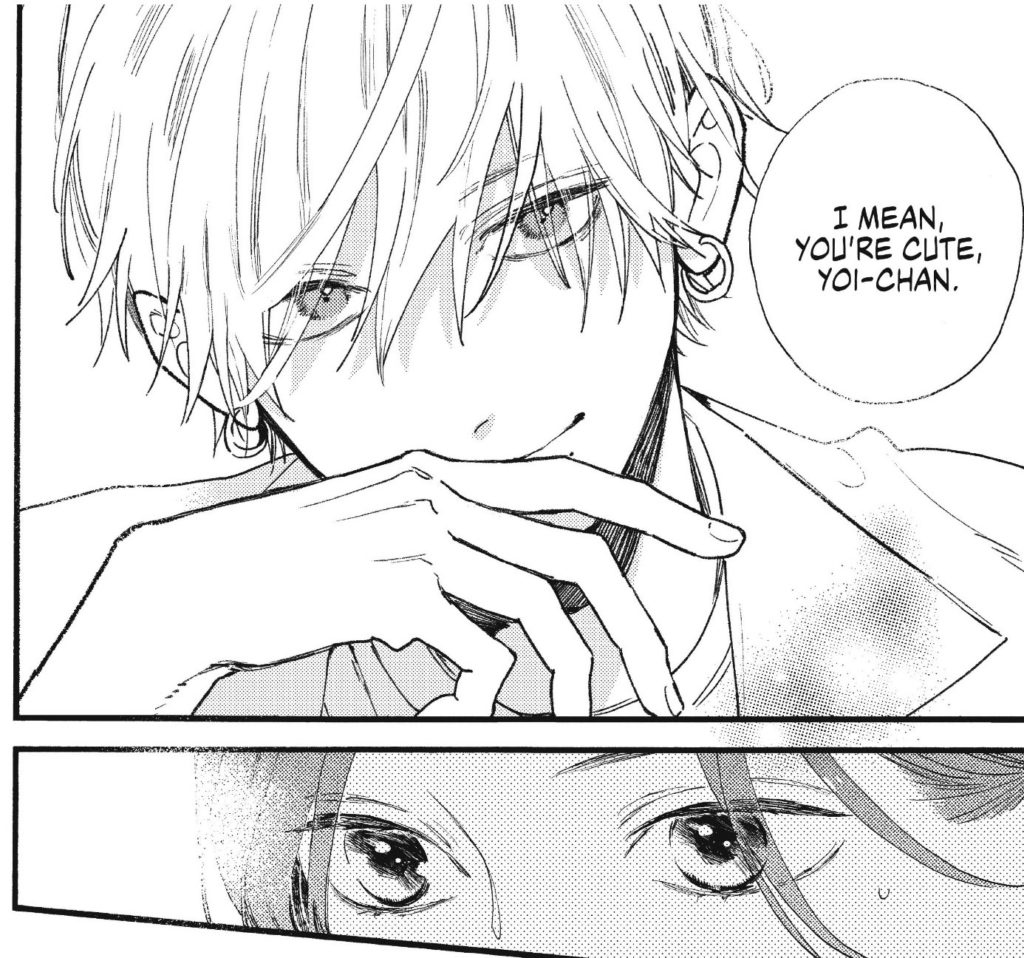
33:15 Going back to the point of Yoi being uncomfortable with how she’s seen in high school, her friend Nobara taking notes for her BL manga based on how she acts and how people treat her, is actually pretty funny and sharp. But it also underlines how she’s treated sort of strangely even by her closest friends.
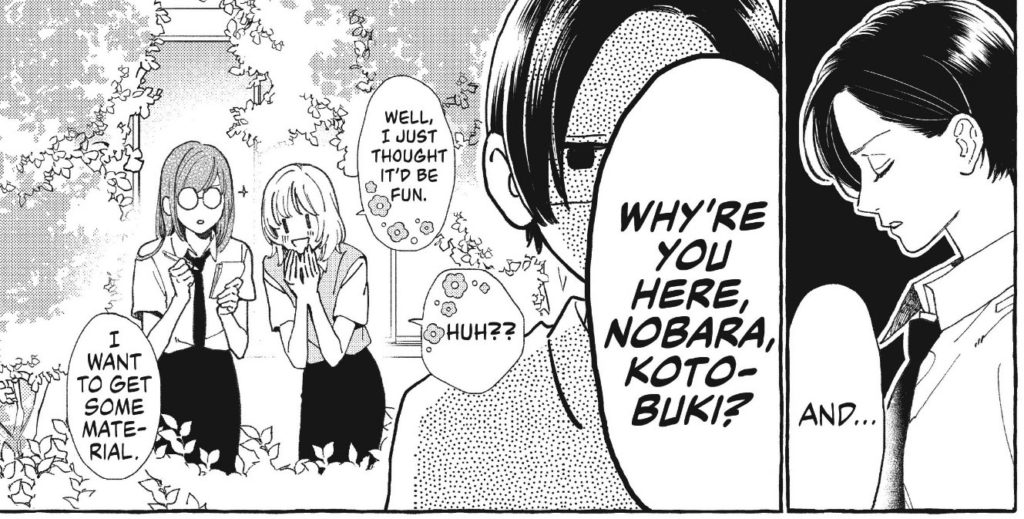
37:25 Oh whoops, we let a swear or two through.
37:35 David mentions the manga series GIGANT, by Hiroya Oku. It’s a sci-fi-sex-comedy seinen manga (those closest thing we’ve read to this would be RaW Hero) about a guy who starts dating an Adult Video actress, and then the actress gains the power to grow like 20 or 30 meters tall. It’s by the author of Gantz and Inuyashiki, which means it’s probably way over the top, but also there’s probably some good substance and social commentary as well. If David ever recommended it I’d be into reading it for the podcast, but it’s not the kinda thing I’m gonna go read on my own. 😉
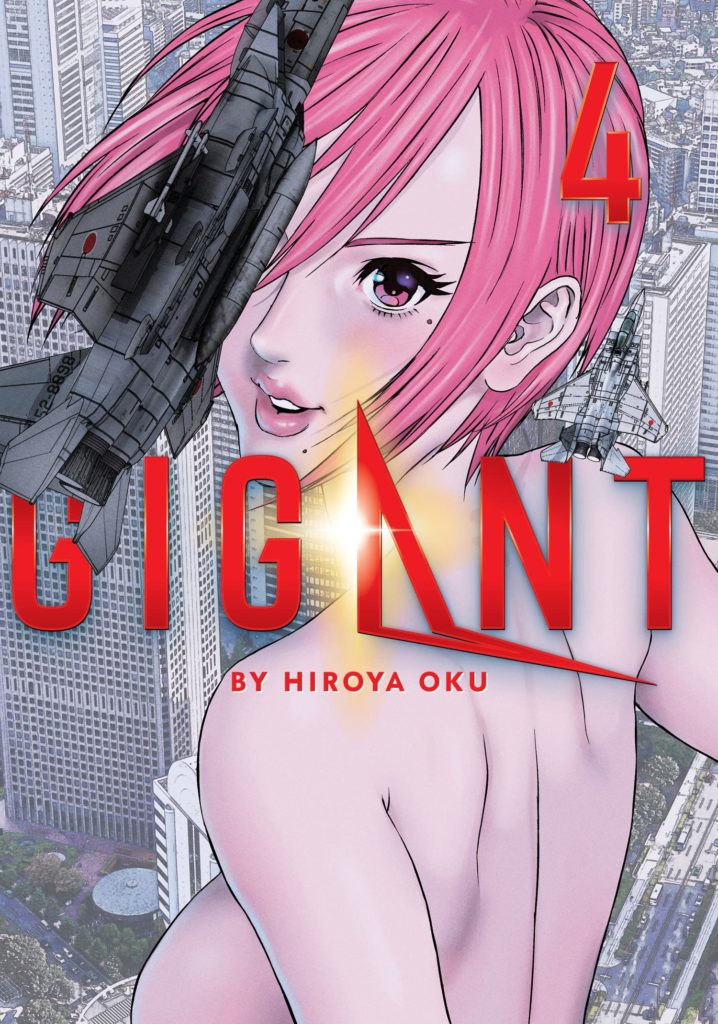
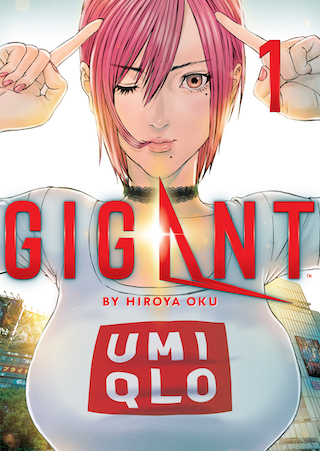
37:50 I’m so glad the team called out the scene where they sleep in the bed together but nothing sexual happens. There’s a scene like that in Scott Pilgrim which I like quite a bit (though those characters are in their early 20s), and just the sequence of them sleeping is great… But when it goes to Yoi’s imagination, and she’s cuddling a giant warm cat, it’s a surprisingly surreal little moment, and works really well.
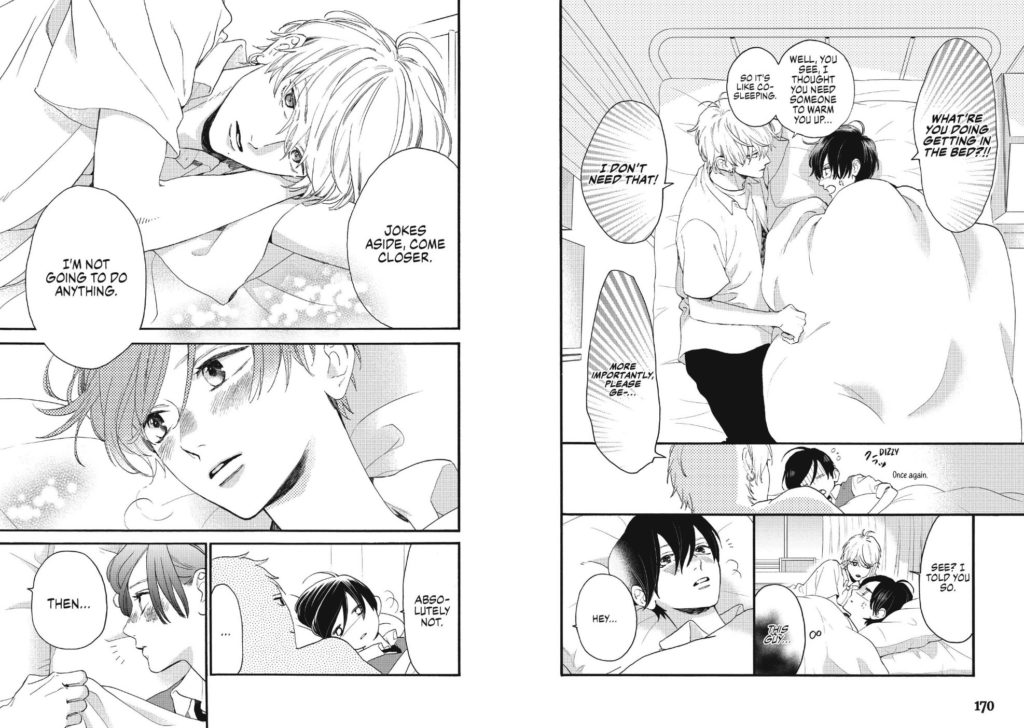
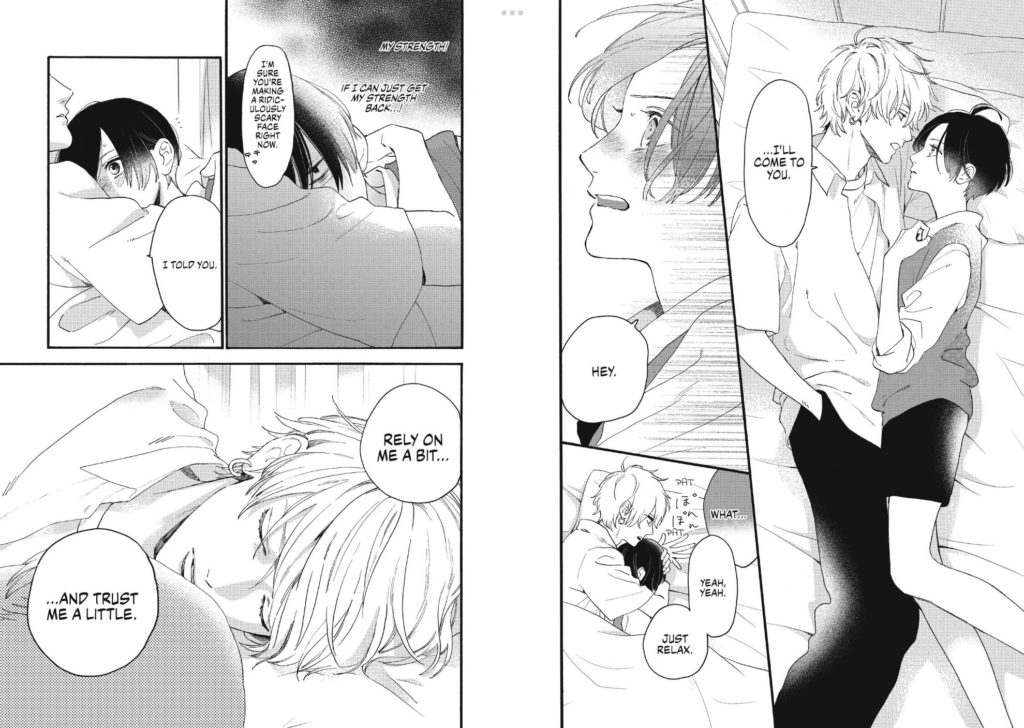
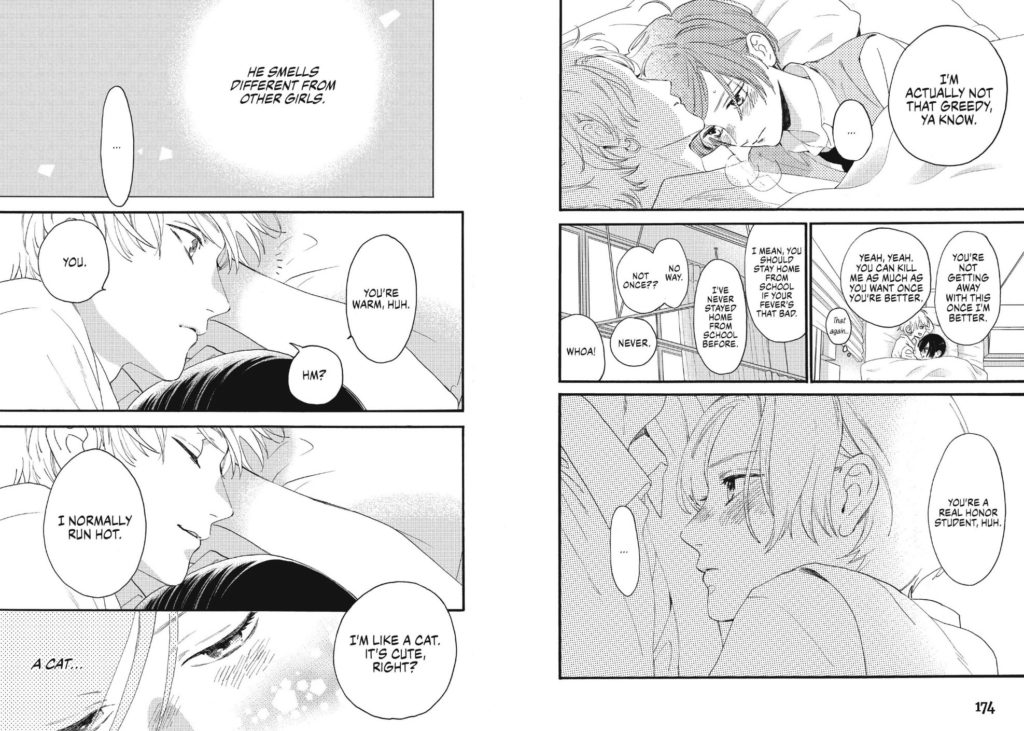
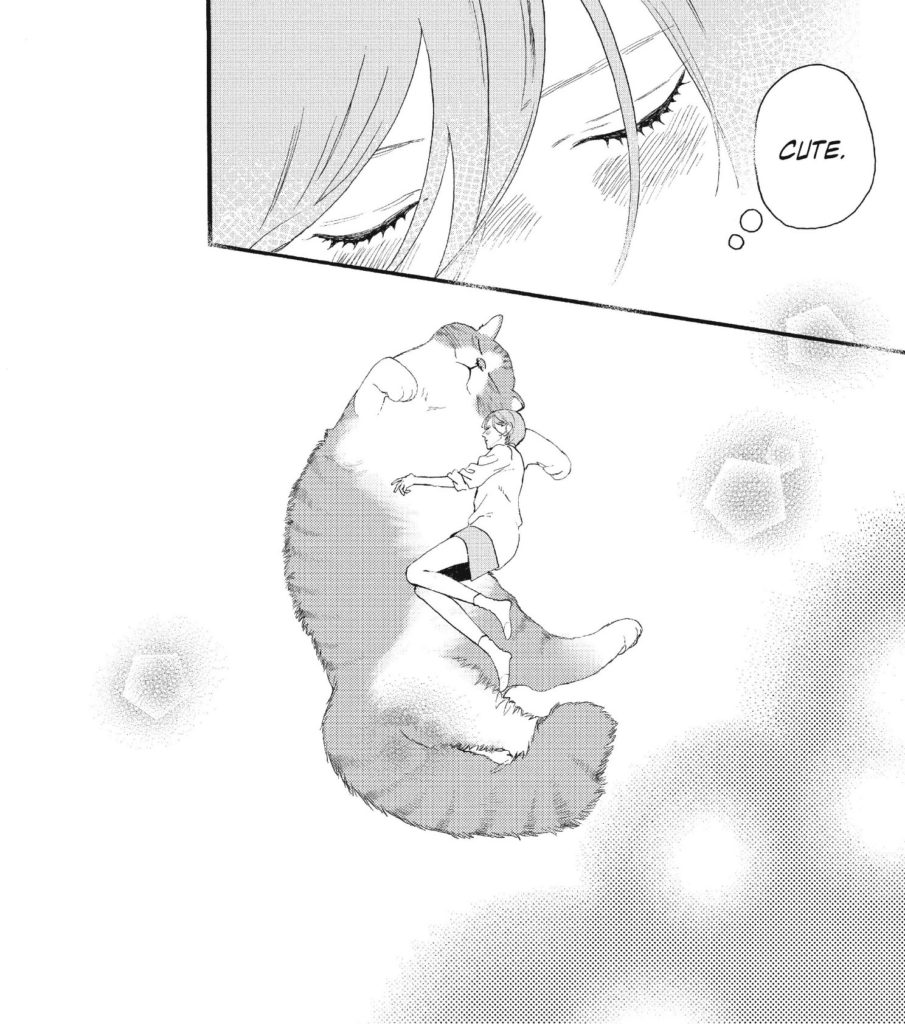
39:40 David mentions that In the Clear Moonlit Dusk reminded him of another comic, and we find out what that is after the break… and honestly I cannot even imagine how these two things connect together. Can’t wait for that episode so he can explain himself. 🙂
And that’s In the Clear Moonlit Dusk!

44:38: THE BREAK! After this point the timestamps might be off due to dynamic ad insertion. And hey, since we’re advertising anyway, let me recommend to you Mangasplaining Extra, where you can read manga, bonus articles, and more. Check it out at http://mangasplainingextra.com and subscribe for lots more content. 🙂
45:00 Alright, it’s time for us to pick our next round of books!
David picks something super-anime for us, Witchcraft Works by Ryū Mizunagi, from Vertical/Kodansha. A gender-swapped prince-rescues-the-princess story where a super powerful, wealthy, and rich high school witch needs to rescue and protect a boring old high school boy. It’s fanservice-y and anime-y. It’s fascinating because when I think of this sort of thing, my go-to is something like Love Hina or Negima, but of course, I’m old. Hahaha.
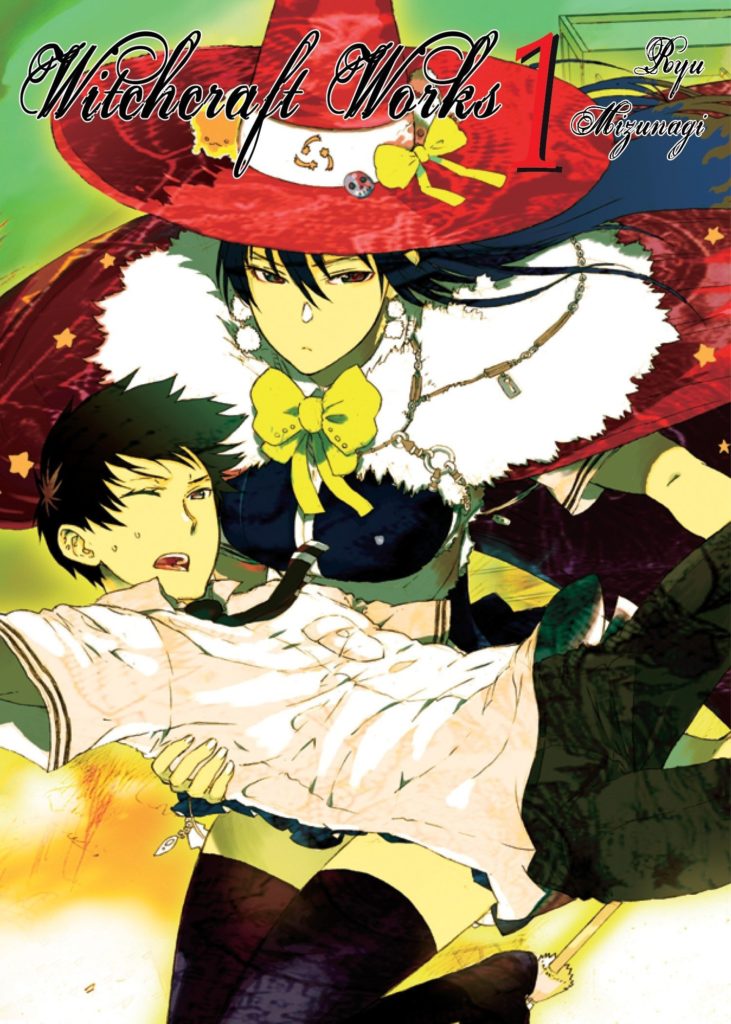
48:00 David is referring to 7 Billion Needles, which we read back in season one. It became notorious for being a book where the author is constantly drawing naked dudes, but only sometimes drawing them with their wangs hanging out, and sometimes drawing them with no genitals at all? It’s a weird book. Heh.
Christopher picks… 4 first chapters of different manga! It’s breaking the format of the show in a way that David already broke it with his Tsutomu Nihei episode! Here’s the four first chapters we will be reading, and all four are available to read, legally, for free:
Food Wars – Sokugeki no Soma Chapter 1, by Yūto Tsukuda and Shun Saeki [LINK]
Kokkoku: Moment by Moment Chapter 1, by Horio Seita [LINK]
Sweetness & Lightning Chapter 1, by Gido Amagakure [LINK]
How Are You? Chapter 1, by Miki Yamamoto [LINK]
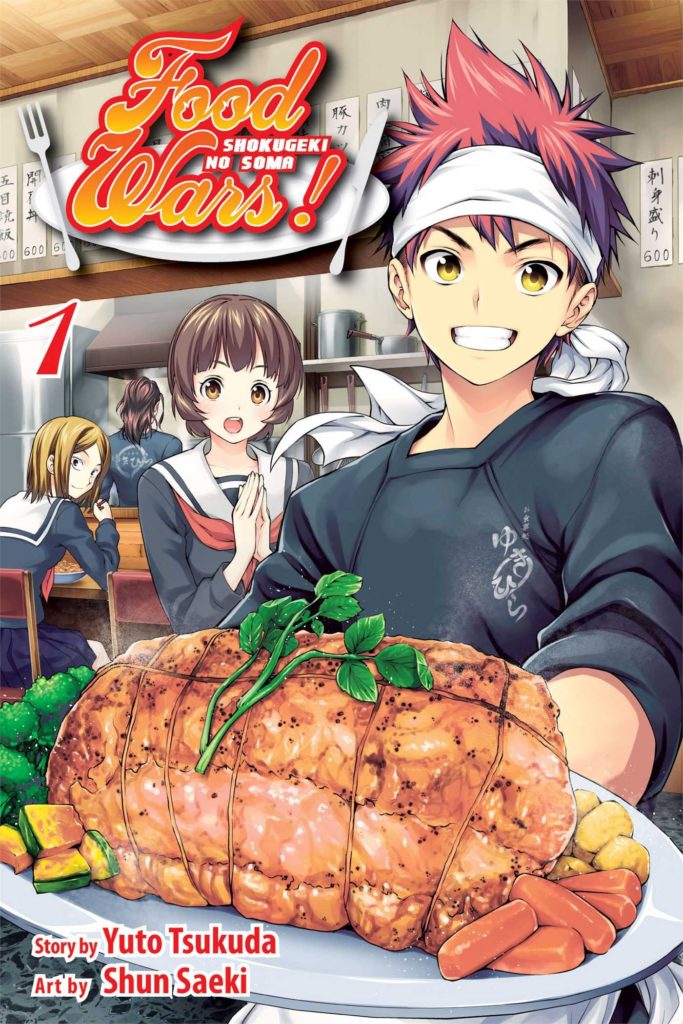
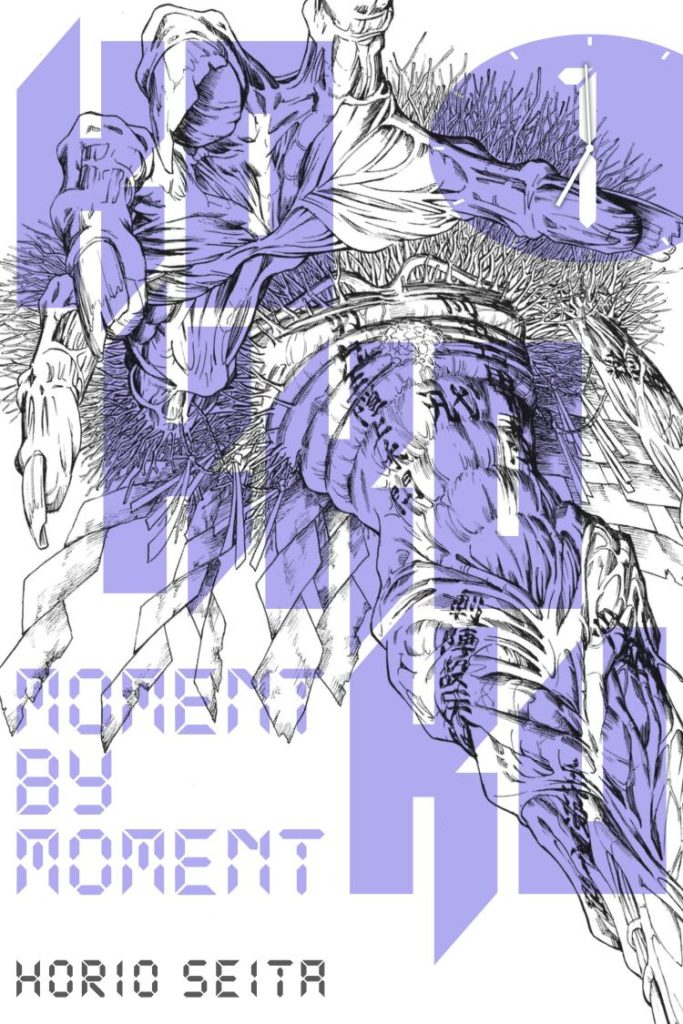
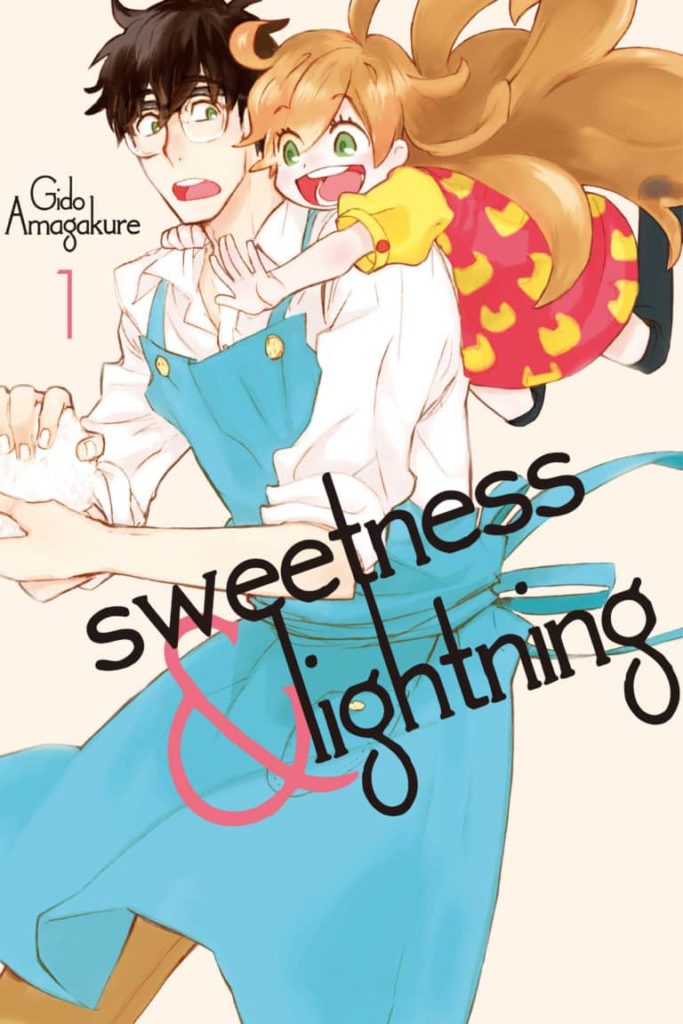
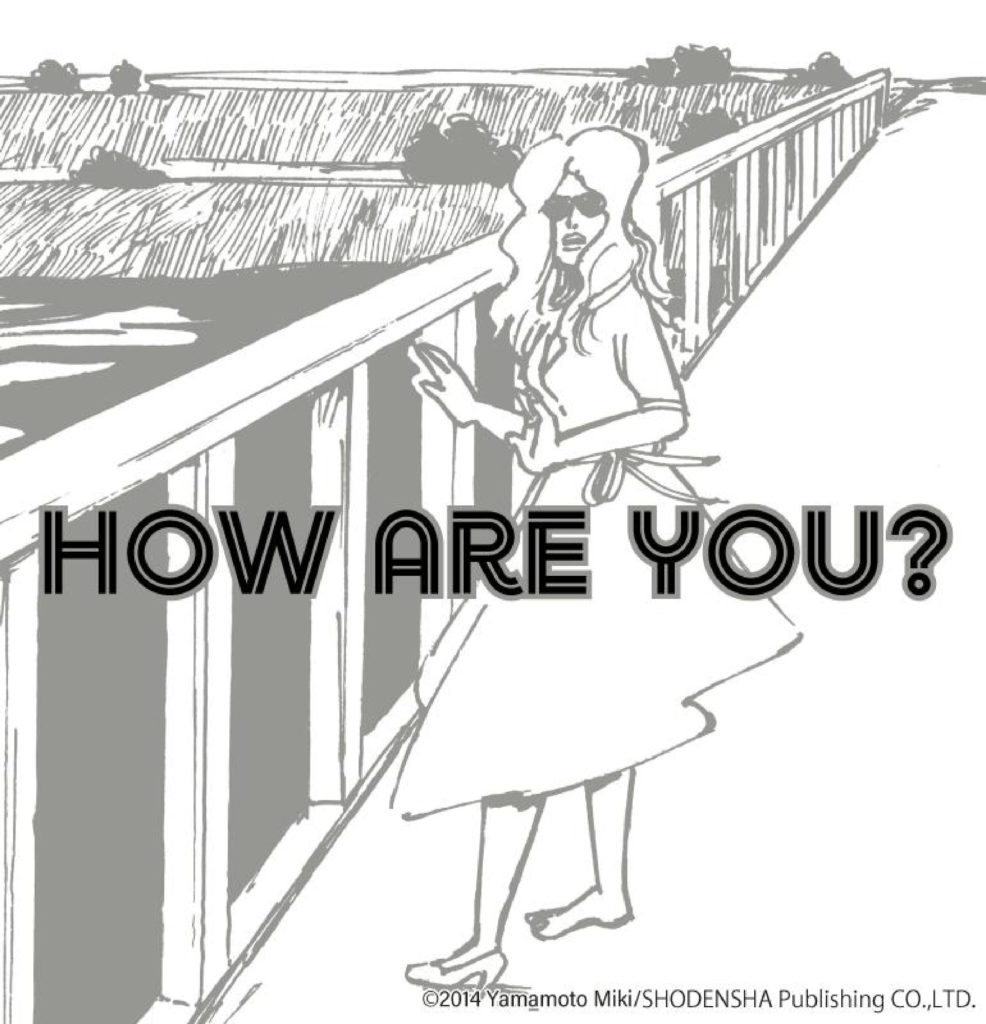
53:40 Deb picks Witches: The Complete Collection Omnibus, by Daisuke Igarashi, published by Seven Seas. A beautifully illustrated collection of short stories about different types of witches from regions around the world. It’s an unique book and we’re really looking forward to it!
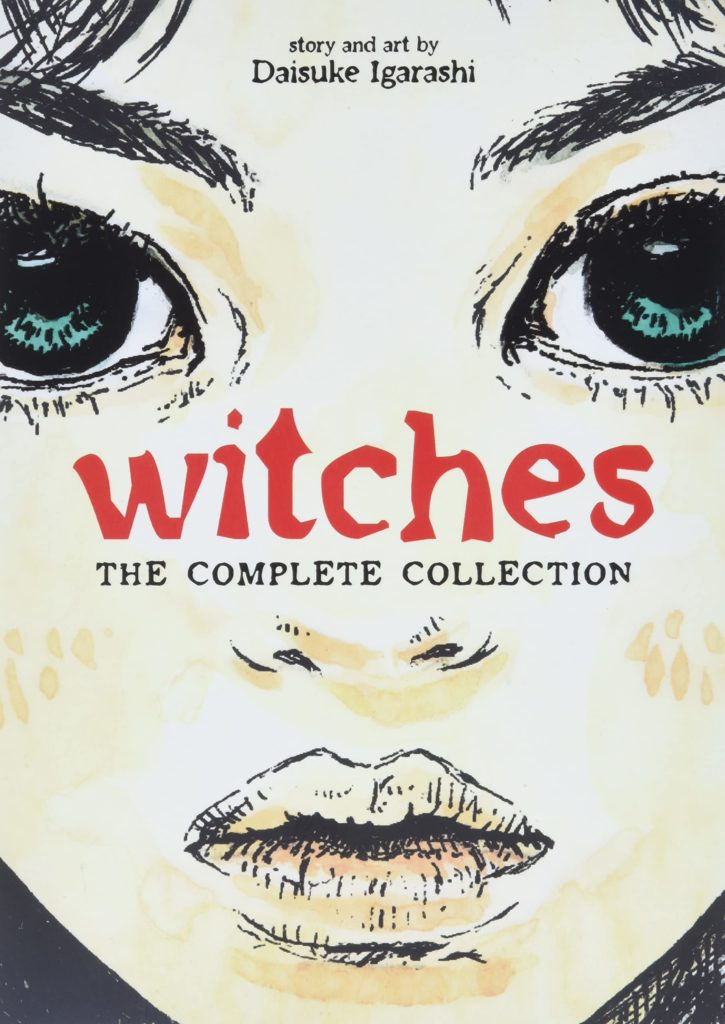
So after Chip plays favourites, which means picking the fans last, that makes our list of upcoming episodes look like this:
Ep. 68: MASSIVE, by various artists (Fantagraphics)
Ep. 69: All Rounder-Meguru vol. 1 & 7, by Hiroki Endo (Kodansha)
Ep. 70: My Hero Academia vol. 1, by Kohei Horikoshi (VIZ)
Ep. 71: Moonlight Mile (Japanese), by Yasuo Otagaki (PIXIV)
Ep. 72: Witch Hat Atelier vol 1, by Kamome Shirahama (Kodansha)
Ep. 73: Witches by Daisuke Igarashi (Seven Seas)
Ep. 74: Witchcraft Works vol. 1 by Ryū Mizunagi (Kodansha)
Ep. 75: Four First-Chapters Special! Food Wars, Kokkoku, Sweetness & Lighting, and How Are You?
So yeah, Episodes 72, 73, and 74 make a solid 3 weeks of VERY different books about Witches! What will our next theme be? “Boob Books?” Who knows! All I know is that when Deb says we did “Dick” books, she knew what she was talking about. Get ready for MASSIVE next week.
1:00:00 TIME FOR SHOUT-OUTS!
Christopher shouts-out Our Colors, the new manga graphic novel from Gengoroh Tagame (My Brother’s Husband), published by Pantheon Books. It’s a massive new collection about a closeted teenager slowly learning to accept himself, and to come out. I’m still reading it (I really wanna savor a new English-language release of Tagame’s work) but I’m enjoying it a ton so far.
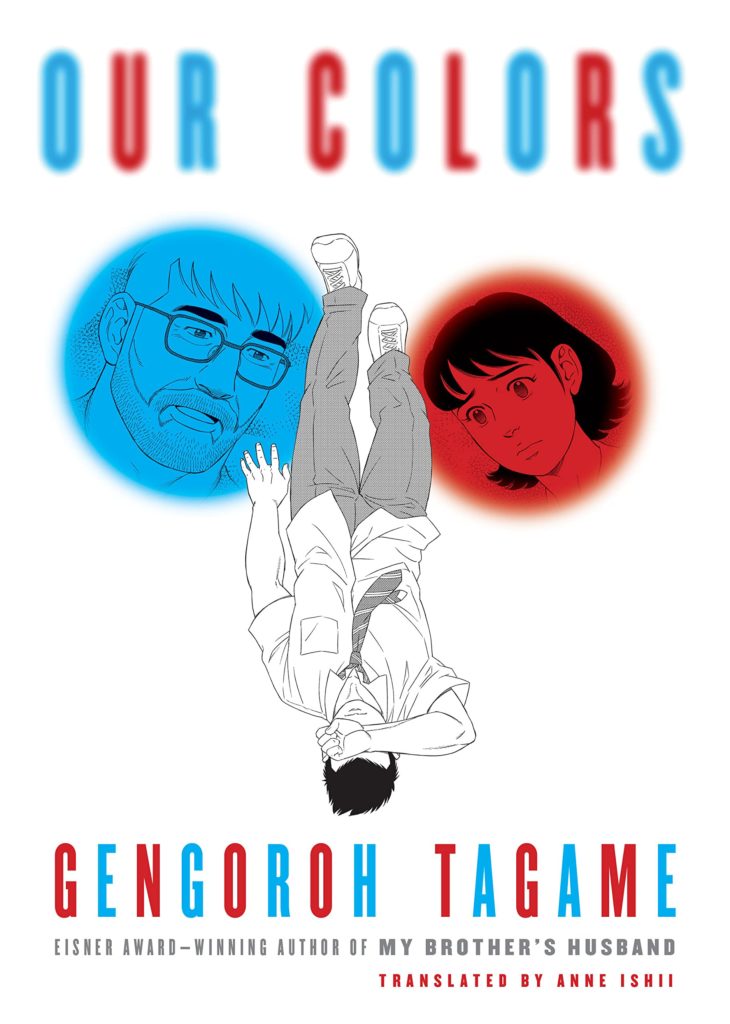
Chip shouts-out the recently deceased Ray Liotta, with a hilarious story about him as a kid, and his parents.
David shouts-out The United Workers of Seven Seas, a just-formed, just-recognized union of workers at the manga publisher Seven Seas. At the time of recording, Seven Seas hadn’t decided to voluntarily recognize the union which had formed, but actually went ahead and did just that on June 24th! We record about a month ahead and this just happened this past weekend. Congrats though to the union for their recognition, and we wish them the best of luck in negotiations fighting for better working conditions for their members. Learn more at https://www.uw7s.com/.
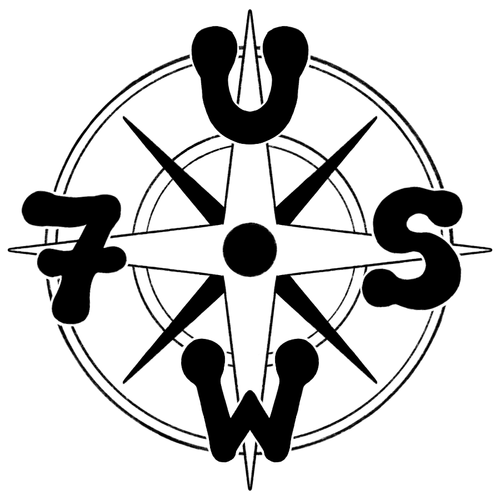
Deb shouts-out the manga we mentioned earlier this episode, The Untouchable Midori-kun, by Toya Toyota. We covered it extensively up top, but here’s a link again in case you wanna go check it out now that the episode’s over.
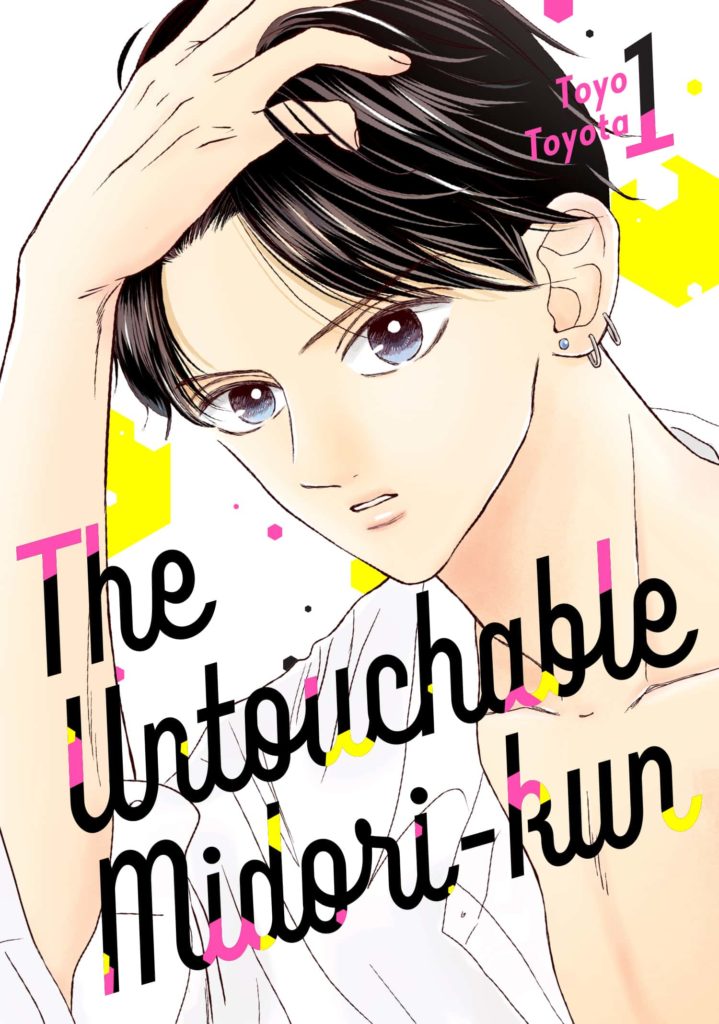
And the episode IS over! Thanks so much for listening! Please support your local comic and manga specialty shop when purchasing these books, and you can find one near you at comicshoplocator.com. You can also check your local library for print and digital lending options, they have TONS of manga! Also, check us out at MangasplainingExtra.com — we’ve got some cool new manga series that we’re hoping to announce very soon. Finally, thanks to D.A.D.S. for their musical accompaniment this episode.
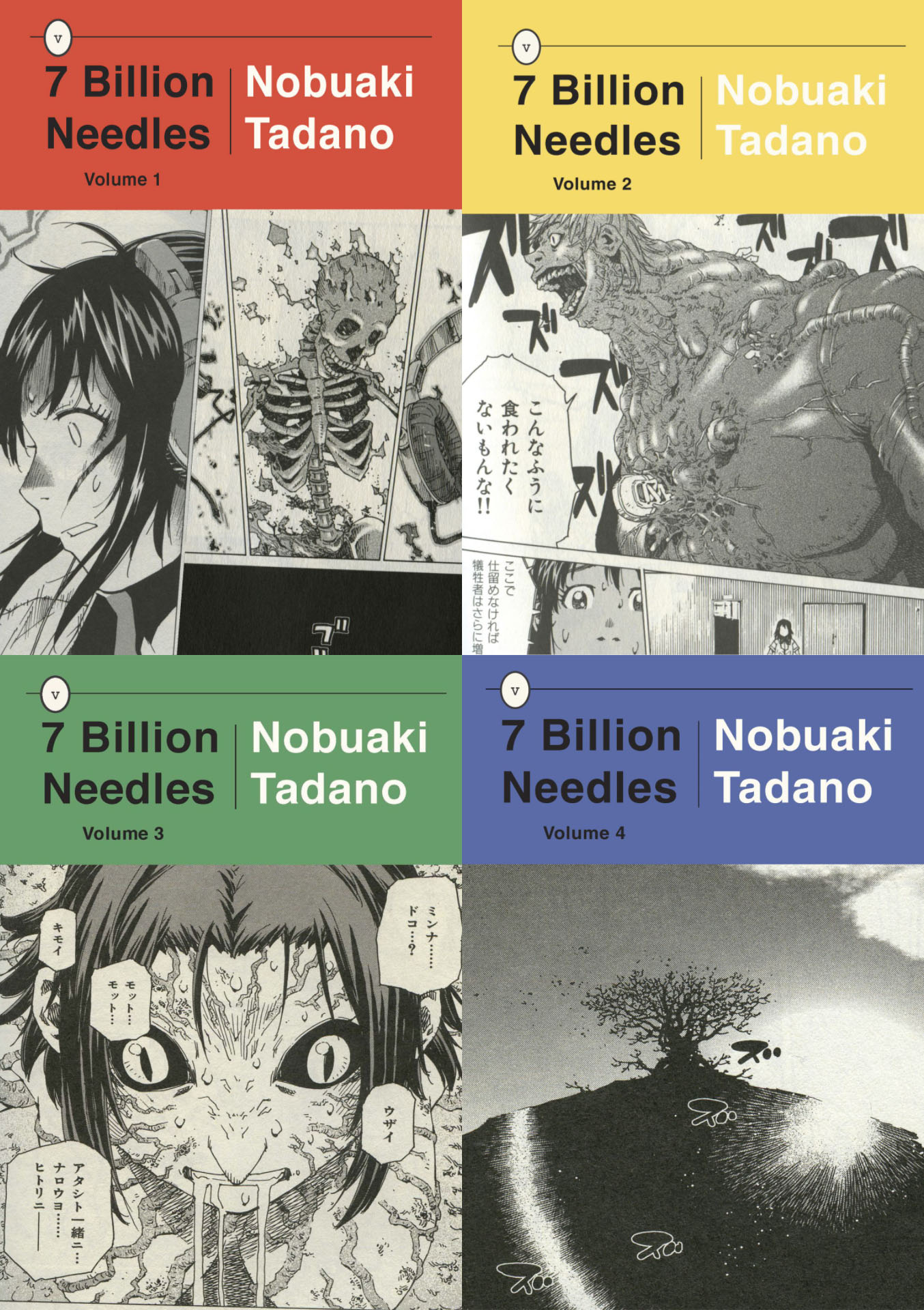
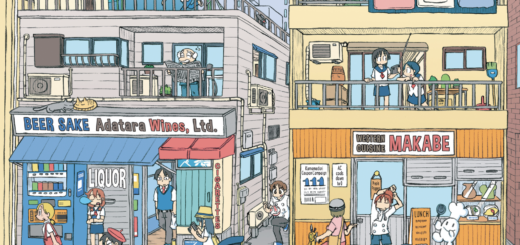
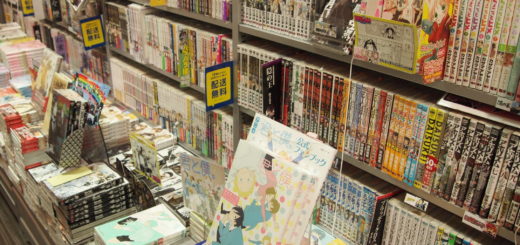
Thanks for the link to Yuri Studio. Unexpected and much appreciated. I don’t discuss the Class Prince phenomenon too much in that video, but there’d be a lot to talk about for sure.
One of the things you’ve all touched upon in these podcasts is that even if a manga isn’t “for” you, listening to people who really like it discuss the things they like about it is itself an enjoyable experience.
Like Chip, I don’t actually like shoujo all that much. The clueless, weak protagonist and asshole (non-verbal, manipulative, etc) male lead annoy me whether we’re talking Regency romance or Shoujo manga. And I really hate romantic comedy, which makes reading most manga romances a challenge. ^_^;
But listening to you all enjoy the heck out of this book was delightful. So thank you for that.
I once again feel like we need to reassure Chip that there is a difference between “being an asshole” and just not liking something. Especially when you have actual reasons behind it and not “gyuh huh it girly and girl bad” — although “I’m a middle aged man and therefore not the Target Audience for this” is also valid!
I agree that the dialogue felt a little stiff at times, and I did almost bounce off it completely for that, but I got the series on sale during one of Kodansha’s Digital Sales and even then with BookWalker Points! And I’m glad I pushed through because I do think it gets more fluent and less clunky as the series goes on which is all you can ask for really! Steady improvement and enjoyment =)
It’s not my favourite Shojo, but I am really liking the character dynamics and I’ll be sure to pick up Vol 4 when it comes out in English! Although I might wait again for a sale. Kodansha do enough of them…
Maybe it’s time to break out the Action Shojo? Magical Girls perhaps? Or just anything with swords. I’m not ABSOLUTELY sold on Prince Freya yet, but I’ve read 3 volumes and but boy howdy is there a lot of blood shed! And The King’s Beast certainly has a LOT to talk about, and I don’t think y’all have done a Anthro series yet?
Not that I have ever just picked up a book only because it had a Kitsune on the cover what are you talking about? I am a person of culture! >___>
Side note — I am doing my Fruits Basket re-read in prep for the movie coming out at the end of the month in the UK and even though I have read it hundreds of times even I struggle with the silliness at the start! That series made me who I am, but absolutely not one for someone who hasn’t read much manga before lol
I admit, I haven’t given this manga a shot. I did buy the first volume of Daytime Shooting Star and liked it well enough, but not well enough to continue with it… Despite shoujo being my primary manga love, I just find that these kinds of high school rom-coms, with a few notable exceptions, don’t do much for me. I remember when Tokyo Pop introduced Peach Girl (2000 I think? Anyone else remember those really little initial “Chix Comix” *cringe* paperbacks?) and it was so refreshing to finally have that type of shoujo manga in English–I ate them up. They followed it by the decidedly melodramatic high school shoujo, Mars (which I think still holds up as exceptional), but even back then, I soon realized most of those titles weren’t for me (and certainly now being *sigh* 40, doesn’t help.)
Which–getting into the nebulous field of genre classifications–is why it bothers me that I’m starting to realize for a lot of English language fans, shoujo primarily MEANS exactly this type of manga. The wonderful Erica Friedman in the comments here even says she doesn’t like shoujo much–and yet she did a spectacular job with Jocelyne Allen of localizing Rose of Versailles which to me is *peak* shoujo. Looking at just one of my way too many manga book shelves, I can see Banana Fish, Please Save My Earth, Heart of Thomas, X (CLAMP), Swan, and New York New York (and that’s excluding all the josei titles–more on that below 😛 ) — all peak (albeit now “old” or at least classic,) shoujo titles, and not one of them fits the classification of shoujo as it is used in this episode. Admittedly, I also consider BL as shoujo, even though I realize that over the past twenty years in Japan it really has become its own distinct thing…
Why does this matter to me? I mean it really shouldn’t… But as I have sunk back into manga fandom after joining Twitter during the pandemic, I quickly realized how many fans there are who outright say they don’t like shoujo. Of course, they always make exceptions (just like when Viz started serializing Banana Fish and X way back in the late ’90s, some guys are still claiming somehow that they aren’t “really” shoujo). Still, I realize that it’s because so many of them simply think ALL shoujo is, well, stuff like In the Clear Moonlit Dusk (and, having enjoyed this episode, I do understand that Dusk is a title that is self-aware of its tropes.)
I guess I’d just hate to think Chip now feels that shoujo isn’t for him, because he equates the term purely with this type of title (which of course is perhaps the most prominent in shoujo, but doesn’t represent even 40% of what’s out there or popular.)
In the notes Christopher wrote: “which was the first sorta-shojo, sorta-josei series we discussed (we gotta talk about how those labels are deeply broken at some point).”
…yeah. I know I’ve rambled on about this before–specifically how All My Darling Daughters was serialized in Melody magazine, which advertises itself, for reasons only Hakusensha knows, as shoujo, and yet ALL of their major titles (including Daughters as well as Ooku: the Inner Chambers and Himitsu – Top Secret) are what most fans would precisely see as josei, and target that 18+ demo. Further complicating things, In the Clear Moonlit Dusk is from Kodansha’s Dessert magazine, which is classified as a josei magazine (at least recently in Japanese sales charts), and yet almost all their titles are high school set , relatively chaste, very very shoujo set manga.
Dessert came about in the 90s when Kodansha suddenly folded their Shoujo Friend title, which was still one of the top shoujo magazines and had built its reputation in the 70s as being one of the big blockbuster teen oriented shoujo mags (alongside Margaret and, eventually, Hana to Yume). According to the information I’ve gotten from some shoujo scholars in Japan, this was done partly because Kodansha didn’t have an 18+ targeting shoujo magazine (the way Shogakokun had Petit Flower–now Flowers), and wanted to rebrand Shoujo Friend as a magazine that would straddle both the teen and the older market (in fact a lot of Shoujo Friend titles just went over to Dessert). When I look at recent issues though, it still feels much more teen oriented.
So basically, it’s all rather unclear, even more so than shonen/seinen, which we like to equate shoujo/josei with. My friend who has published nearly 20 books covering specific shoujo manga history with her group Toshonoie (they’re amazing–check them out at toshonoie.net ) has confirmed what other people have told me, that in Japan most readers would still refer to josei titles simply as shoujo–with the understanding that they are targeted at older readers. Josei as a category is mostly just used within the industry to differentiate the magazines.
(I liked what another friend said. That Josei manga can have protagonists who are college age, office lady age, but also high school age. But you rarely find protagonists who are college age, and never office lady age, in shoujo manga. OK then…)
Great shout out by Christopher to Gengoroh Tagame’s Our Colours. I’ve had volume 1 of the French version, confusingly titled *in English* Our Colorful Days, for a couple of years now and loved it–frankly, even more than My Brother’s Husband–but held off on buying any more when I found out about the English omnibus coming out, which I’ve had on order from my comic book shop for a few weeks now (………) But I can’t wait to read it all. I still have a hard time mentally associating the Gengoroh Tagame I’ve known for years for his often brutal gay porn, with how wholesome (sometimes, for my tastes, almost *too* wholesome) these serialized titles have been, but I really appreciate them. The relationship between the teen and the older gay male reminded me (and this is a complement) of my fave friendship in Yuhki Kamatani’s Our Dreams at Dusk (side not–once again I must stress I think this is maybe the best queer, non-porny, manga we have in English and I hope you guys will sometime cover it.
But it does make me wonder if Gengoroh Tagame has any “inbetween” titles–narrative focused manga that still, you know, has sexy scenes, or if he just keeps the two styles completely separate. But I guess that’s a question best saved for the MASSIVE podcast going up today which, boy, have I been looking forward to.
And with all of that in mind–Chip has admitted to having a soft spot for soap operas, since growing up with them (and my sympathies for the death of Joey on Another World when he was a child). I can relate–I watched All My Children daily during my lunch break from age 8 or so, and eventually would tape it and watch it after school/work (but in my case my mom did *not* approve and I initially had to do it in secret–but it did inadvertedly lead to my English MA thesis about queer narratives in marginalized serialized fiction, since the first time I saw a gay teen on TV was a two year long storyling on AMC in the early/mid 90s).
So keeping that in mind, when you do eventually return to shoujo recommendations, why not go full soap opera–rather than all this rom-com hijinks stuff? Of course I’m not sure what really soapy titles are still in print (I would recommend Mars, if it was…), but…
As to if and when you cover another shoujo title… Chip has admitted a number of times about his nostalgic attachment to soap operas (and my sympathies about the traumatic death of Another World’s Joey when he was just a boy…) And I can relate–starting at 8 years old, I would come home for lunch so I could watch All My Children, eventually taping it and watching it after school/work (the difference being that my mother did NOT approve of soaps, so I initially had to watch in secret. But it served me well–my English MA thesis was about queer representation in a variety of marginalized serial story genre, where I was able to interview writers from the first gay storyline I remember seeing on TV, a two year gay teen story on AMC in the early 90s)
So… why not fully lean into that and go for a truly soapy shoujo manga–none of these rom-com hijinks. Of course, I’m not sure which titles really fitting that are still in print (I would recommend Mars, if it was, but certainly part of the appeal to me of 70s shoujo is the full on serialized melodrama of works by Hagio, etc–something that you don’t get a sense of in her short stories.)
(Ack double post as it wasn’t going through–once again I clog up these comment pages 🙂 )
I for one love when there’s disagreement, because I could feel all of Chip’s criticisms quite keenly, but I also felt the love for the manga from our other hosts. Agreed with Mack that disliking something is not the same as being an asshole about it. I don’t think this was brought up during the show, but Chip’s reaction to a tropey shojo manga is reminiscent of his reaction to some of the very traditional and tropey shonen manga on this podcast. I remember his reaction to “Naruto” being something along the lines of “meh.” This makes me curious what he’ll make of “My Hero Academia” in a few weeks. If I were to be uncharitable toward it, I would classify as a meeting of Western superhero tropes and shonen manga tropes. Are trope crossovers enough to open Chip’s heart or close it off completely?
So looking forward to you discussing Igarashi’s “Witches.” Will you even have enough time to touch on all the stories in there?